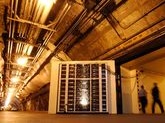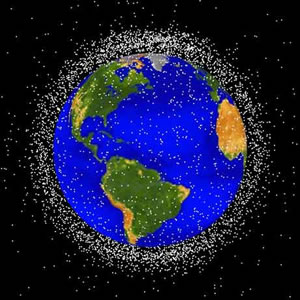European Satellite Is Falling from Space, But Where Will It Hit?
Space.com, 8th November 2013
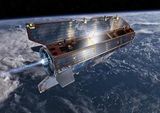
A European gravity-mapping satellite is expected to fall out of space in a few days, though no one knows exactly where its surviving fragments will land.
The fate of European Space Agency's falling GOCE satellite was sealed in October, when the spacecraft ran out of the fuel needed to keep it aloft in a very low orbit above Earth.
Now that the satellite's mission is over, its handlers at the European Space Agency (ESA) are closely tracking its ever-descending orbit to determine where it might fall.
-
European Space Agency's Goce satellite falls to Earth
BBC News, 11th November 2013
The European Space Agency's (Esa) Goce satellite has re-entered the Earth's atmosphere, burning up in the process.
Early estimates suggested any surviving debris could have fallen somewhere along a path through East Asia and the Western Pacific to Antarctica. [...]
Statistics show that there is typically at least one piece of space "junk" re-entering the Earth's atmosphere every day; with, on average, one intact defunct spacecraft or old rocket body coming back every week.
Esa's last mission to make an uncontrolled re-entry was the magnetosphere explorer Isee-2, which came back in 1987.
The agency does, however, regularly manage controlled re-entries. Its space station freighter, the Automated Transfer Vehicle, can weigh some 13 tonnes when it comes back to Earth.
Space Junk Satellite To Fall To Earth: GOCE Update
Brevard Times, 20th October 2013
The European Space Agency estimates that a satellite weighing 2,425 pounds (1,100 kilograms) will begin its orbital decay sometime this week and then hurl back to Earth in an uncontrolled descent from an orbital height of about 139 miles (224 kilometers).
NASA Juno probe HOWLS past Earth - and goes into HIBERNATION
Unexpectedly dozing like a 140,000kph baby towards Jupiter
The Register, 9th October 2013

Updated NASA's Jupiter-bound Juno spacecraft waved goodbye to Earth as it shot past at 140,000kph - and mysteriously switched into "safe mode", the space agency confirmed to The Register.
The $1.1bn probe buzzed our planet to gain a speed boost for its five-year journey to the gas giant. A spokesman for the space agency's Jet Propulsion Lab told us solar-powered Juno "is in safe mode at present" and "responding in safe mode as expected".
"It was in safe mode as it came out of the Earth flyby," he said. "Two-way communications have been established. The spacecraft is in a safe stable state receiving power from the solar arrays as expected."
Comment: Hmmm... The cosmic environment around Earth is now extremely hostile and satellite launches have become very hit and miss.
Deep Impact Probe Dead
NASA comet craft loses contact
Spokesman Review, 21st September 2013
LOS ANGELES – A spacecraft that gave scientists their first peek into a comet’s icy interior will explore no more, NASA said Friday.
The space agency declared an end to the Deep Impact spacecraft after it unexpectedly fell silent. Engineers tried for a month to regain contact, but lost hope.
'Ferrari of space' set to fall to Earth
Phys.Org News, 12th September 2013

A science satellite dubbed the "Ferrari of space" for its sleek, finned looks will shortly run out of fuel and fall to Earth after a successful mission, the European Space Agency (ESA) says.
Launched in 2009, the satellite—a hi-tech craft designed to monitor gravity and ocean circulation—is likely to break up in mid-October, its mission manager told AFP on Wednesday.
The Gravity Ocean Circulation Explorer (GOCE) orbits at an extremely low altitude of just 260 kilometres (160 miles), where there are lingering molecules of atmosphere. [...]
"We are facing the situation where the electrical propulsion system which keeps the spacecraft flying at this extremely low altitude will stop working somewhere between the end of September and the beginning of November—the best engineering prediction is in the middle, somewhere in the 16th or 17th October," he said.
Most of the 5.3-metre (17.2-foot) spacecraft will break up and burn when it tumbles to an altitude of 75 to 80 kilometres, he said.
According to re-entry analysis, about 250 kilos of its one-tonne mass will survive, hitting the surface in a trail of "between 40 and 50 fragments" extending over 900 kilometres, he said.
Comment: I am apalled after all the chatter about space junk and the need to clean that this satellite will be falling back to Earth to become a possible major hazard...
Russian Proton-M rocket crashes, erupts in ball of fire (PHOTOS, VIDEO)
RT News, 2nd July 2013
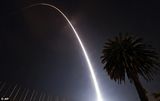
A Russian Proton-M rocket carrying three GLONASS navigation satellites crashed soon after takeoff from Kazakhstan’s Baikonur cosmodrome.
Immediately after takeoff, the rocket swerved to one side, tried to correct itself, but instead veered in the opposite direction. It then flew horizontally and started to come apart with its engines in full thrust.
Making a huge arch in the air, the rocket plummeted back to earth and exploded on impact close to another launch pad used for Proton commercial launches.
The crash was broadcast live across the country and fears of a possible toxic fuel leak immediately surfaced following the incident. While no such leak has been confirmed, the rocket was initially carrying over 600 tons of toxic propellants.
There have reportedly been no casualties to surroundings structures and the town of Baikonur was not affected.
Comment: This is a total disaster... The disintegration of the Russian space program continues... I will look out for any honest explanation of what went wrong (but truth sometimes takes years to leak out.... ), see archives for previous failures and associated comment.
Defunct Soviet Reconnaissance Satellite May Hit Earth
RIA Novosti, 12th February 2013

MOSCOW, February 12 (RIA Novosti) – A decommissioned Soviet military satellite will burn up in the atmosphere Sunday in an uncontrolled descent and surviving fragments may hit Earth, according to an aerospace defense official.
The military is actively monitoring the satellite using its space tracking network, which has indicated that it will impact the Pacific Ocean on Sunday, Colonel Alexei Zolotukhin said Friday.
-
Russian satellite set for Earth 'burns up in atmosphere'
MSN News, 17th February 2013
An uncontrolled Russian satellite that was expected to crash back down to Earth has burned up in the earth's atmosphere, according to reports.
Officials had originally said parts of the Kosmos-1220 satellite were due to re-enter the planet's atmosphere at high speeds on Sunday, but Russian media has since reported that the fragments burned up on re-entering from space.
Russian Space Forces had thought it likely that the defunct reconaissance satellite would land in the Pacific Ocean, but there have as yet been no reports of any impact on Earth.
After Outage, Critical Weather Satellite Back OnlineWeather Underground, 10th June 2013
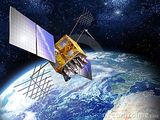
One of NOAA's most important weather satellites returned to normal service last week, nearly a month after a micrometeroid struck the satellite and knocked it slightly off its path in orbit around the Earth.
Tests showed the GOES-13 satellite likely took a hit in the arm of its solar array panel on May 22, which shifted the satellite off its "delicate, geostationary balance" over the eastern United States, NOAA reported in a press release June 6.
The impact forced the satellite to shut down immediately, which alerted NOAA engineers to put the GOES-13 into safe mode while they studied what went wrong. The collision was determined not to have damaged the satellite's instruments or the satellite itself.
Comment: Wow... So now we know, the GOES-13 weather satellite was hit by a meteoroid... That is quite interesting, but at least weather men can get back to normal service warning folk about the next extreme weather event coming their way...
Satellite's malfunction casts new questions on accuracy of future weather forecasts
New Jersey, 9th June 2013

For a brief period on May 22, Dan Kottlowski’s view of the eastern Atlantic Ocean went dark, and as a senior meteorologist at AccuWeather, that’s a problem.
A satellite used for monitoring weather conditions had malfunctioned for the second time in a year, and suddenly Kottlowski’s ability to provide clear forecasts to hundreds of clients and the general public had been hampered.
"We really did not have any coverage for a period of time off the East Coast," Kottlowski said. "It put us in an awkward position."
The National Oceanic and Atmospheric Administration did not respond to repeated requests for comment, but a bulletin posted on its website shows the satellite was restored to service last week after engineers were able to correct the problem and another satellite was repositioned to make up the gap — ultimately, no harm was done.
But the incident has frayed nerves in the nation’s forecasting community, which worries that the federal government’s aging fleet of satellites is in danger of failing and more than $20 billion in planned replacements are not on the immediate horizon.
Comment: The weather is getting increasingly wild all over the planet and forecasting for extreme weather events should be given priority. Presumably, lots of rich people need to have their assets destroyed enough times to force some action.
NOAA turns to backup after weather satellite glitch
Spaceflight Now, 23rd May 2013
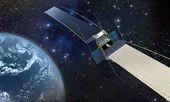
A week before the official start of a potentially active Atlantic hurricane season, the primary U.S. weather satellite keeping watch over the tropics has stopped collecting imagery, NOAA officials said Thursday.
The GOES 13 satellite, designated the prime spacecraft to cover the eastern United States and the Atlantic Ocean, suffered a fault late Tuesday in its attitude control system, according to Thomas Renkevens, deputy chief of NOAA's satellite products and services division.
"It appears to have been a problem with the star tracker, which caused the satellite to lose its position hold capability," said Kathryn Sullivan, acting NOAA administrator.
Comment: Another satellite busted by the star tracker dying... What's that, two in 10 days? (The planet hunting Kepler satellite is also down for the same reason.) This is the reality of space weather and we can expect more and more satellites to become unreliable as electronics becomes more vulnerable to worsening cosmic conditions. Luckily, there is a backup satellite which is very much needed as NOAA have just announced a busy hurricane season is to be expected and vital warnings are needed to save lives. See NOAA news
NOAA predicts active 2013 Atlantic hurricane season
Planet-Hunting Kepler Spacecraft Suffers Major Failure, NASA Says
Space.coms, 15th May 2013

The planet-hunting days of NASA's prolific Kepler space telescope, which has discovered more than 2,700 potential alien worlds to date, may be over.
The second of Kepler's four reaction wheels — devices that allow the observatory to maintain its position in space — has failed, NASA officials announced Wednesday (May 15).
If one or both of those failed wheels cannot be brought back, the telescope likely cannot lock onto target stars precisely enough to detect orbiting planets, scientists have said.
Comment: As I explained in my What Is Space Weather? E-book, this might be a space weather induced failure. But, as we know from the Galaxy 15 "ZombieSat" even after many months satellites come come back from the dead... See,
Kepler space telescope 'isn't down-and-out just yet' – Nasa.
Texas tornadoes leave a path of destruction near Dallas/Fort Worth [45 PHOTOS]
Baltimore Sun, 17th May 2013
Pentagon Paying China — Yes, China — To Carry Data
Wired News, 29th April 2013
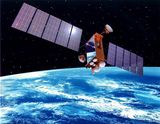
The Pentagon is so starved for bandwidth that it’s paying a Chinese satellite firm to help it communicate and share data.
U.S. troops operating on the African continent are now using the recently-launched Apstar-7 satellite to keep in touch and share information. And the $10 million, one-year deal lease — publicly unveiled late last week during an ordinarily-sleepy Capitol Hill subcommittee hearing — has put American politicians and policy-makers in bit of a bind. Over the last several years, the U.S. government has publicly and loudly expressed its concern that too much sensitive American data passes through Chinese electronics — and that those electronics could be sieves for Beijing’s intelligence services. But the Pentagon says it has no other choice than to use the Chinese satellite. The need for bandwidth is that great, and no other satellite firm provides the continent-wide coverage that the military requires.
Comment: I think this just reflects the issue of satellite availability but some think this is rather poor form...
Russian Space Cargo Ship Suffers Glitch After Launch
Yahoo News, 24th April 2013
An unmanned Russian cargo spacecraft launched toward the International Space Station this morning, but once in orbit, the capsule encountered a problem, officials said.
The Progress 51 supply spacecraft failed to deploy an antenna used for navigation after lifting off from the Baikonur Cosmodrome in Kazakhstan at 6:12 a.m. EDT (1012 GMT). Specifically, the antenna is used to "measure the orientation" of the ship, NASA officials said.
Comment: Another failed Russian launch see recent history in archives... Update:
Lost In Space? Russian Spaceship Suffers Glitch
Russian Satellite Hit by Debris from Chinese Anti-Satellite Test
Space.com, 8th March 2013
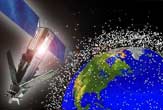
A small Russian spacecraft in orbit appears to have been struck by Chinese space junk from a 2007 anti-satellite test, likely damaging the Russian craft, possibly severely, SPACE.com has learned.
The space collision appears to have occurred on Jan. 22, when a chunk of China's Fengyun 1C satellite, which was intentionally destroyed by that country in a 2007 anti-satellite demonstration, struck the Russian spacecraft, according to an analysis by the Center for Space Standards & Innovation (CSSI) in Colorado Springs, Colorado. [...]
It is not immediately clear whether the satellite is merely wounded or completely incapacitated.
The space collision is the second substantial in-space accident between an active spacecraft and a defunct satellite or piece of space debris. In February 2009, a U.S. communications satellite was destroyed when it was hit by a defunct Russian military satellite, creating a vast debris cloud in orbit.
Comment: See archives about the seriousness of the proliferation of space junk and how space weather exacerbates the whole situation. Update:
Legal Action Against China Unlikely in Space Junk Crash with Russian Satellite
What Happened With the SpaceX Dragon Orbital Glitch?
Popular Mechanics, 1st March 2013
 UPDATE: SpaceX's Dragon capsule won't be linking up with the International Space Station on Saturday morning after all. But the company's leaders say the spacecraft is under control and its mission to the ISS should eventually go on.
UPDATE: SpaceX's Dragon capsule won't be linking up with the International Space Station on Saturday morning after all. But the company's leaders say the spacecraft is under control and its mission to the ISS should eventually go on.
SpaceX CEO Elon Musk and President Gwynne Shotwell joined NASA's William Gerstenmaier and ISS program manager Michael Suffredini for a press conference this afternoon to address the problems the Dragon capsule experienced after reaching orbit this morning, when its Draco thrusters failed to activate. The Dragon itself is in orbit, holding steady until its operators ensure they are in complete control of it and are ready to attempt the link-up to the ISS. "We put the vehicle where we wanted it to go," Shotwell says. "It's in orbit and is stable" Two of the four pods of thrusters are currently working normally, Musk says. The other two are looking good but not online yet.
"We're definitely not going to rush it. It was a little frightening there," Musk says. "There's no leakage, debris of fluid leakage we know of. All systems seem to be intact and functioning at this point. We're hoping it stays that way."
Comment: Disaster? It's not all systems go these days, it's all systems go if you are lucky, see archives concerning the failures of recent space missions. However, the focus now is paying attention to see whether predictions that new electronics will become unreliable becomes a reality in our very near future. Update: Finally...
SpaceX cargo capsule reaches International Space Station
SpaceX Dragon Capsule Suffers Glitch After Launch to Space Station
Space.com, 1st March 2013
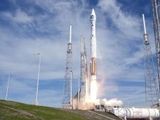
CAPE CANAVERAL, Fla. — A privately built unmanned spacecraft launched for NASA by the commercial spaceflight company SpaceX blasted into orbit Friday (March 1), but has experienced some sort of malfunction after separating from its rocket, the company says.
The robotic Dragon space capsule launched into orbit atop SpaceX's Falcon 9 rocket in what appeared to be a smooth liftoff from a pad at Cape Canaveral Air Force Station in Florida at 10:10 a.m. ET (1510 GMT). But once in orbit, SpaceX officials reported a problem just after spacecraft separation, when the Dragon capsule was expected to deploy its solar arrays.
Comment: Hmmm... Update:
Dragon Spacecraft Glitch Was 'Frightening,' SpaceX Chief Elon Musk Says
NASA loses communication with Space Station
CNN News, 19th February 2013

CNN) -- NASA lost communication with the International Space Station on Tuesday and has established only sporadic connections since, according to NASA spokesman Josh Byerly.
The space agency says it is currently only able to communicate every 90 minutes when the facility passes over ground stations in Russia.
The station, which is carrying one American astronaut and two
Comment: Hmmm... There are reports the outage was for 3 hours, see also
Space Station Astronauts Lose NASA Radio Link for 2 Hours
Rocket carrying US satellite crashes into Pacific seconds after launch
RT News, 28th January 2013

A Ukrainian-made Zenith-3SL rocket carrying a US-made Intelsat-27 satellite has crashed into the ocean seconds after being launched from a platform in the Pacific Ocean. Ground control lost contact with the rocket.
Sea Launch, the international company overseeing the launch, wrote in an official statement on their website that, "approximately 40 seconds after liftoff of the launch of the Intelsat 27 spacecraft, all telemetry was lost indicating a loss of mission."
The spacecraft, built by Boeing Satellite Systems, was launched on a Zenit-3SL launch vehicle on the ocean-based Odyssey launch platform at the Earth’s equator.
Preliminary reports suggested the rocket’s engines stopped automatically because its trajectory was incorrect.
The first stage of the rocket was supposed to detach two-and-a-half minutes into the flight, but did not. A search operation is underway for the downed rocket.
Comment: The success rate of Russian rocket launches is nose-diving too.... I don't think this is just about bad management. For more info: Best of the Blog:
Space Junk, Satellite Failure & The Escalating Problem.
Experts: Mysterious fireball in sky likely falling satellite [US]
WSLS10 News, 28th January 2013
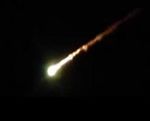
ROANOKE, Va. --
An object that looked like a giant fireball made a brief appearance in the sky at around 9:30pm Sunday -- and while no one can say with 100 percent certainty what it was, experts tell us they have a pretty good idea.
Aerospace Corporation -- a federally funded research and development center based in California that works with the Air Force and NASA -- says the timing and witness descriptions are consistent with a satellite that fell back into Earth's atmosphere.
That satellite, called Cosmos 1484, was launched by the Soviet Union back in 1983.
Sightings were reported from Canada all the way down to Georgia. Aerospace says that's a much greater distance than you typically see with these events, which is why they're continuing to investigate.
Comment: The new reality, lots of junk falling from the skies due to worsening space weather conditions. SOTT.net have collected some reports about this incident see,
Fire in The Sky
Bigelow’s Bulletproof BEAM – NASA’s Bet Against Space Debris
Guardian Express, 17th January 2013
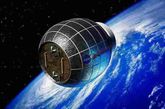
North Las Vegas, NV. — It was only a matter of time before Bigelow Aerospace won its NASA contract. [...]
Garver and Bigelow had met just ten months earlier to sketch out the idea. That ink is now put to the $17.8 million contract represents relatively swift action on NASA’s part, indicating increasing cooperation between the space agency and private space companies like SpaceX and Bigelow. The module will remain attached to ISS for two years. It is not, like other modules, slated to house particular experiments, though with Genesis I and II Bigelow has experience providing microgravity science laboratory space.
Ultimately the crew will decide what to do with the extra space, but they’ll find it at once comfortable and, because it doesn’t vibrate like the aluminum-shelled exterior of the rest of the ISS, it will be the quietest part of the Station. Whatever else it houses, BEAM seems destined to be the preferred makeout spot on ISS; maybe the first true makeout spot in space, though one is always suspicious about Mir.
NASA’s swiftness was no doubt driven by another sort of urgency. The problem of space debris isn’t an abstract scenario for the ISS. Twice in recent years, in April 2011 and January 2012, the Station has had to maneuver out of the path of fragments closing on it at incredible speeds. There are some 9000 fragments of debris, ranging from entire discarded probes to small fragments, left over from thousands of launches since the beginning of the Space Age. The potential danger posed by these MMODs (Micro Meteroid Orbital Debris) is quite fluid, and can be made much worse by a single accident. Such was the case on February 10, 2009, when the 10 February that year, the Russian satellite Kosmos 2251 crashed into the American communication satellite Iridium 33's solar panel. Kosmos 2251 completely disintegrated; Iridium 33's panel shattered like a mirror.
Comment: Factually, the reporting of the number of pieces of debris is wrong because even a fleck of paint travelling at 17,000 mph (27359 kph)can cause serious damage. In June 2011, Space.com reported that orbiting satellites are threatened by over 700 000 pieces of debris, see
Scanning the Skies for Debris Hazards, so 9000 pieces of debris is probable only those objects over 4cm. As I have explained before, in a severe solar storm, satellites often drop out of orbit and in the ensuing chaos it is inevitable that some live satellites will be hit by debris. Extreme space weather is the real reason why new innitatives have been given priority to stop the risk of the whole of the world's satellite communication infrastructure being turned into a blizzard of junk. For more info: Best of the Blog:
Space Junk, Satellite Failure & The Escalating Problem
Russia saves satellite after launch glitch
Space Daily, 11th December 2012
Russian satellite system official sacked
Space Daily, 13th November 2012
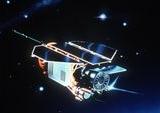
Russia's defense industry housecleaning continued over the weekend when satellite navigation system designer Yuri Urlichich was sacked from his job.
Urlichich, the chief designer of the costly and scandal-plagued Glonass system of 24 navigation satellites, was fired Sunday by the Kremlin's military-industrial commission headed by Deputy Prime Minister Dmitry Rogozin, RIA Novosti reported.
The resignation came shortly after police accused unnamed Glonass officers of embezzling $200 million of $10 billion program's funds. [...]
This month's sacking of Serdyukov isn't merely a Kremlin-style replacing of leadership but part of wider effort by Putin to "purify" the entire authoritarian structure of the military-industrial complex, former Russian Prime Minister Yevgeny Primakov told Xinhua.
Comment: This is a long article. It seems that some are so busy being fraudulent that they are not interested in what is happening in space hence a series of technical glitches and launch failures.... However, the ignorant and stupid attitude of 'let's just keep committing crimes' whilst the ship is sinking is widespread...
Satellite destroyed following SpaceX rocket glitch
Reuters News, 11th October 2012
 * Spacecraft was flying piggyback on Falcon 9 rocket
* Spacecraft was flying piggyback on Falcon 9 rocket
* Rocket's main payload was Dragon cargo capsule for NASA
* Orbcomm had $10 million insurance policy on mission
CAPE CANAVERAL, Fla., Oct 12 - An experimental communications satellite flying piggyback aboard a Space Exploration Technologies' Falcon 9 rocket fell out of orbit and burned up in the atmosphere following a problem during liftoff, satellite operator Orbcomm said on Friday.
The New Jersey-based company's OG2 satellite was a prototype for a new 17-member communications satellite network scheduled to be launched aboard two more Falcon 9 rockets in 2013 and 2014.
Orbcomm declared the satellite a total loss and filed a claim under an insurance policy worth up to $10 million, "which would largely offset the expected cost of the OG2 prototype and associated launch services and launch insurance," the company said in a statement.
Comment: There seems to have been three completely different important launches at about the same time, here is a summary.
1. This story is about a partly failed mission where the satellite did not reach the intended target and instead of becoming junk it just fell back to Earth, but I have seen no media reports of a suspected satellite re-entry.
2. A new U.S. Air Force GPS satellite to modernize the network, the 2F spacecraft reached its intended orbit despite a problem with the rocket's upper-stage engine, and now the U.S. Air Force have launched an investigation into the engine failure.
3. Galileo, Europe's rival to the US's GPS navigation system was launched on Friday. As I have reported in te past, this extremely expensive project has had problems due to space weather knocking out a test satellite for about two weeks.
SpaceX rocket glitch puts satellite in wrong orbit
Reuters News, 9th October 2012
 * Dragon cargo capsule unaffected by rocket problem
* Dragon cargo capsule unaffected by rocket problem
* Orbcomm prototype communications satellite missed its orbit
* Falcon 9 rocket had engine problems during ascent
CAPE CANAVERAL, Fla., Oct 9 - A prototype communications satellite flying as a secondary payload aboard a Space Exploration Technologies Falcon 9 rocket was sent into the wrong orbit because of a problem during launch Sunday evening, officials said Tuesday.
One of the nine Merlin engines powering the Falcon 9 rocket shut down early, though the other engines burned longer to make up for the loss of thrust, saving the primary mission of delivering a Dragon cargo capsule to the International Space Station for NASA. [...]
The company declined to release details, but Jonathan's Space Report, a website that tracks space launches, says Orbcomm expected its satellite to be placed into an elliptical orbit with a low point of 217 miles (350 km) and a high point of 466 miles (750 km) from Earth. That would later become a circular orbit at 466 miles (750 km) from Earth.
Instead, it ended up in an orbit that ranges from 126 miles (203 km) to 200 miles (323 km). Orbcomm said an analysis has begun to determine if the satellite can use its onboard propulsion system to boost its orbit.
Comment: Terrible... This reminds me of the problems that the Russians have been having launching satellites and space probes. It is a fact that launching has become more problematic (see archives), but we have only had a few hints that the recent disasters might have been related to space weather.
UK design to 'harpoon' old satellites
BBC News, 2nd October 2012

UK engineers are developing a system to harpoon rogue or redundant satellites and pull them out of the sky.
It is a response to the ever growing problem of orbital junk - old pieces of hardware that continue to circle the Earth and which now pose a collision threat to operational spacecraft.
The harpoon would be fired at the hapless satellite from close range.
A propulsion pack tethered to the projectile would then pull the junk downwards, to burn up in the atmosphere.
Comment: Well, if we want to continue having our lives 'enhanced' by GPS, modern satellite telecommunications and satellite imagery and data etc, then we need to clean up before space weather turns the near Earth environment into a blizzard of junk.
Space debris from Russian satellite threatens International Space Station, report says
The Australian, 27th September 2012
U.S. Weather Satellite Malfunctions
Weather.com, 25th September 2012

The U.S. weather satellite, GOES East, which tracks the East Coast as well as Atlantic hurricanes has malfunctioned. After vibrations were detected on Sunday affecting the images the satellite sends back to Earth, engineers decided to put that part of the satellite into standby mode.
The Weather Channel spoke to NOAA’s office of Satellite Operations late Monday afternoon, and was assured that forecasting abilities will not be greatly affected, if at all.
A standby satellite, which was on and available after some testing in August, was moved into place to cover the area on the East Coast.
Additionally, a third satellite which is used to cover the West Coast has broadened its coverage area to include areas in the Eastern U.S.
Comment: Well, we have just had the Fall equinox and that is a risky time for satellites if they are in the wrong place at the wrong time.... (See synopsis below for more background info.) Spaceweather.com were informing us that the auroras were brilliant as they always are at this time of year,
AUTUMN LIGHTS, but the risk for satellites is something I wrote about in my e-book
The Electrotechnics of the heavens. For those who don't understand the metaphysical implications, as I have written before, according to Dr Wilhelm Reich who discussed his research with Albert Einstein in the 1940s, geomagnetic storms were deliveries of orgone energy or aether. Today, we would clarify all this and say that space weather deliveries sub-atomic matter in the form of plasma but some of that energy is only visible in certain parts of the electromagnetic spectrum like infra-red and ultra-violet and some of it is completely dark to our technological/astronomical instruments, but it is still physical matter, the same as solar neutrinos were once dark but now they can be detected. (This takes us into the debate about what dark matter really represents.) What some call aether is still up for debate as to whether it really is completely invisible as it is quite clear that some humans (synaesthetes) can see more into the infra-red and ultra-violet and they can see energies that are normally invisible to others. Space is not a cold dark place where nothing happens, think instead of stars wars with laser beams and massive bolts of lightning, hurricanes of sub-atomic particles and cosmic bullets of galactic and solar cosmic rays. So, satellites are failing because when storms in space are severe, they are being struck by an assortment of space weather but essentially, sub-atomic particles all carry a charge and when there is a massive flow of charge, the electrical shock can damage delicate electronic components. From a human point of view, the Earth is experiencing a cosmic deluge of celestial energy that is being used to drive massive evolutionary change on this planet.What's more, some humans have the ability to soak up some of this energy and utilise it to their personal benefit. However, the real message is that the human energy field has to be in a good enough state to maintain it's integrity in order to filter energies that are useful. This should be an important message that the metaphysical community should be broadcasting loud and clear. It is not being broadcasted because there are not really enough people who care enough about what is happening and are empowered enough to care about others. It's all rather practical considerations, the bullshit that passes for spirituality won't help anyone.
GOES-13 satellite outage
Weather Underground, 24th September 2012
The imaging instrument on NOAA's geostationary satellite that provides regular images every 15 minutes for the Eastern U.S. and Atlantic Ocean, GOES-13, has been experiencing an increasing amount of noise in the signal since September 12. The noise got so bad on Sunday night that the instrument was placed in stand-by mode, and engineers are attempting to troubleshoot the problem. GOES-15, the geostationary satellite that covers the Western U.S. and Eastern Pacific, is now taking images of all of North America to help compensate. However, there is no regular 15-minute satellite imagery available for most of the North Atlantic, including the Caribbean. September is a bad time to be without satellite imagery over the Atlantic, but fortunately, there are not any threat areas in the Atlantic we are currently worried about. The CIMSS Satellite Blog has more information on the outage, and also has links to polar orbiting satellite imagery over the region where we do not have geostationary data. The loss of GOES-13 data will degrade the accuracy of the computer forecast models for the globe, particularly over the Atlantic, for the duration of the outage.
Saturday's Fall Equinox: Earth's Season Change Explained
Space.com, 21st September 2012
Computer Glitch Delays Cargo Ship's Undocking from Space Station
Space.com, 25th September 2012

An unmanned European cargo ship as large as a double-decker bus inside will have to wait a bit longer before leaving the International Space Station due to computer problems, NASA officials say.
The robotic Automated Transfer Vehicle 3 (ATV-3) spacecraft was slated to undock from the space station Tuesday evening (Sept. 25), but a technical glitch with a laptop computer inside the station prevented to orbital departure. The two spacecraft were scheduled to part ways at 6:35 p.m. EDT (2235 GMT). [...]
Station commander Sunita Williams of NASA told Mission Control that commands sent from the laptop apparently were not reaching the ATV spacecraft
Comment: EM Interference and signal attenuation is an issue on Earth too...
How to catch a tumbling, aging satellite
DARPA program to capture, reuse old satellites moves forward
Network World, 31st August 2012

How do you catch a speeding, tumbling, aging satellite? Very carefully. Levity aside, the question is central to the plan scientists at DARPA have for catching up to and grabbing old satellites in an effort to ultimately refurbish and reuse the systems.
Scientists at DARPA say there are some 1,300 satellites worth over $300B sitting out in Earth's
geostationary orbit (GEO) that could be retrofitted or harvested for new communications roles
and it designed a program called Phoenix which it says would use a squadron "satlets" and alarger tender craft to grab out-of-commission satellites and retrofit or retrieve them for parts
or reuse.
Comment: Times are hard, we need to re-use the junk....
Russian space official resigns after failed launch
Key CTV News, 17th August 2012
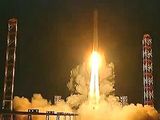
MOSCOW (AP) - The head of Russia's leading rocket manufacturer has stepped down after a failed launch, the nation's space chief said Thusrday.
A Proton booster rocket failed to place two communications satellites into target orbits after its Aug. 6 launch, the latest in a long series of recent mishaps that has hurt the nation's pride in its space program. [...]
Popovkin said that an official investigation into the failed launch has determined that it was caused by a faulty pipe in the rocket's Briz-M upper stage.
Prime Minister Dmitry Medvedev said Tuesday that
Russia had seven failed launches in the past 1 1/2 years, resulting in the loss of 10 satellites. He added the high rate of failure marked a "colossal difference with other leading space powers."
Comment: My suggestion is that the Russians have gone from very reliable rockets to extremely unreliable ones in a very short space of time and it could be related to new cosmic conditions (large amounts of cosmic dust) that engineers have not taken into account, as I have previously outlined but this has only been hinted at in various recent reports.
Huge, Mysteriously Silent Satellite Spotted by Another Spacecraft
Yahoo News, 21st April 2012
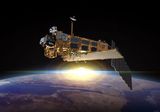
The massive European satellite the size of a school bus that has mysteriously stopped communicating with Earth has been spotted by another satellite in orbit.
The giant Envisat satellite, which is the world's largest imaging satellite for civilian use, was photographed in stunning detail by a French spacecraft that is also designed to snap high-resolution images of Earth, officials with the European Space Agency (ESA) said Friday (April 20).
The photo of Envisat in space reveals that the $2.9 billion spacecraft is intact and that its huge solar array is deployed. Envisat is a huge satellite that weighs about 17,600 pounds (8,000 kilograms). It is about 30 feet long (9 meters) and 16 feet wide (5 m), not counting the solar wing.
Comment: Hmmmm.... $2.9 billion spacecraft... I was worried when I updated my book so I refrained on the price tag of these satellites and only stated the military spacecraft were about a billion dollars, because I did not have much information to go on, and now it looks like I was too cautious...
Contact lost with flagship Envisat spacecraft
BBC News, 12th April 2012

Contact has been lost with the European Space Agency's (Esa) flagship Earth observation mission - Envisat. Controllers stopped receiving data from the eight-tonne spacecraft on Sunday, and have not as yet been able to re-establish communications.
Envisat was launched in 2002 and is already operating five years beyond its planned mission lifetime. Esa was expecting to turn off the spacecraft in 2014, once the first in a series of follow-ons had been launched.
Comment: Another one bites the dust.... cosmic dust.....
Envisat’s satellite failure launches mysteries
WUWT, 12th April 2012
The mystery is called crappy data.... NASA/NOAA satellites with screwed up data is an ongoing problem that very few are aware of...
This really is space junk: Russian space experts examine 200-kilo metal 'UFO dustbin lid' which fell from the sky in Siberi
Daily Mail, 20th March 2012
Space ball: UFO shocks Brazilians (VIDEO, PHOTOS)
RT News, 25th February 2012
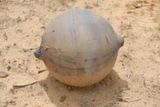
An unidentified metal sphere has plunged from the sky on unsuspecting villagers in northern Brazil, causing an uproar. According to eyewitnesses, the UFO weighs about 50 kilograms and measures roughly one meter in diameter.
The sphere fell on Wednesday in a village of Riacho dos Poços in Brazilian Maranhão state. No casualties were reported apart from an unfortunate cashew tree that was severed by the object as it plunged to the ground, according to MR Notícias, a Mata Roma news site. [...]
In December 2011, a similar incident happened in Namibia, where a metal “Teletubby head” weighing 5.9 kilograms and measuring 35 centimeters in diameter hit the ground in the village of Omanatunga. Some Russian specialists believe the “head” was part of the third stage of the Soyuz-U rocket, launched on October 30.
Mendes, 46, told police the sphere landed several meters from his house leaving a one-meter-deep hole in the yard.
Comment: More space junk falling out of the skies... The following is some related older space weather news.
Solar Activity & Space Debris
spaceweather.com, 19th January 2012
INCREASING
SOLAR ACTIVITY CLEANS UP SAT-DEBRIS:
Earth's atmosphere has been puffing up in response
to increasing levels of UV radiation from sunspots.
This is good news for satellite operators, because
a puffed up atmosphere helps clean up low-Earth
orbit. "The number of cataloged debris in Earth
orbit actually decreased during 2011," reports
Nick Johnson in NASA's
Orbital Debris Quarterly newsletter.
"Even though only 6% of the total
3218 cataloged debris from the ill-advised engagement
had reentered by the end of 2011,
half of
these debris fell out of orbit in the past 12 months,"
he points out. "Likewise, many debris from
the 2009 accidental collision of Cosmos 2251 and
Iridium 33 are accelerating their departure from
Earth orbit. In the absence of a new major satellite
breakup, the overall orbital debris population should
continue to decrease during 2012 and 2013."
Seriously, I have no idea what "ill-advised engagement" is referring too... Almost like a term that could be used for someone getting drunk at a party and doing something they can regret later...
Space junk orbiting Earth threatens satellites, space exploration
Salt Lake Tribune, 6th February 2012

Nighttime sky gazers looking for shooting stars sometimes catch a glimpse of a slower, brighter object streaking across the sky.
It’s usually not a meteor, but rather a bolt or a paint chip that is part of the tons of debris floating in Earth’s orbit, posing real dangers to space exploration.
A new film opening at Clark Planetarium on Friday called Space Junk 3D highlights some of those risks. [...]
Don Kessler, retired NASA senior scientist for Orbital Debris and star of the film, wrote a paper in 1978 predicting what will happen as more space junk filled Earth’s orbit.
"I was trying to understand ... how long would it take before we had to worry about manmade objects colliding with one another," Kessler told The Tribune. The answer: Right about now.
Comment: I note that over at SOTT.net this was designated 'A Propaganda Alert', but I will give them the benefit of the doubt because maybe they sniffed that space exploration is being used as a poor excuse for cleaning up the mess in space. As I have been highlighting for quite some time, there is a serious issue of the possibility of the world's satellite communication system crumbling with a major impact on modern society. There is a risk of a domino effect of things getting worse and worse very quickly. If scientists do nothing things are just going to get bad anyway, but any more major crashes and then there is real danger. The European Space Agency have done some videos projecting what could happen, see links below. I am interested because space weather and some bad geomagnetic storms when hundreds of satellites drop out of their orbits at once in a completely uncontrollable manner, provides a major wild card for disaster. For more info: Best of the Blog:
Space Junk & The Escalating Problem
Why monitor objects in orbit?
European Space Agency, 31st May 2010
Space debris spotlight
ESA Focus, 28 September 2007
I think the ESA have done a few videos highlighting the growing problem of space junk. This animation is new to me and I believe there are more available but I can't find the links. This is out of date because there was a big smash up in 2009, but it gets the point across...
Cosmic rays blamed for Phobos-Grunt fiasco
Space probe apparently not built to fly in space
The Register, 1st February 2012
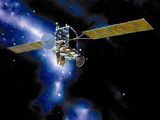
Russian space boffins have come up with a new reason to explain why duff Martian probe Phobos-Grunt fell out of the sky - cosmic rays.
The head of space agency Roscosmos said that an investigation into the short-lived spacecraft had discovered that radiation caused a glitch in the onboard computer system, state news agency RIA Novosti reported.
"Two components of the onboard computer system were spontaneously rebooted and it switched into a standby mode," Vladimir Popovkin said. "The most likely reason [for this] is the impact of heavy charged space particles."
Comment: I am finding this version of the news from Russia hard to believe and so do others! The assumption is that the "impact of heavy charged space particles" means cosmic rays... Well, it does not matter, this was a spacecraft on the way to Mars through the Van Allen Belts and it could not even get out of Earth orbit due to space radiation... Hmmm.....
Space Radiation Doomed Russian Mars Probe That Crashed
Space.com, 31st January 2012

Space radiation most likely caused the demise of a Russian Mars probe that got stuck in Earth orbit shortly after launch and ultimately crashed back to the surface earlier this month, Russia's Federal Space Agency chief said today (Jan. 31), according to media reports.
Russian space chief Vladimir Popovkin said that an investigation pointed to cosmic radiation as the likely culprit in the failure of the Phobos-Grunt mission, but also suggested that an imported spacecraft component may not have been adequately hardened for the harsh radiation environment in space, reported the Associated Press.
Comment: Well, that did not take long for my beliefs about what happened to Phobos-Grunt to be confirmed. I originally said too much cosmic dust and then later I said it might even be put down to an electrical discharge, so I call this news a major hit... Why was I right? Well, this is the same rocket that has been in operation since the 1960s so it is obvious that something must have changed in the environment. Space Weather is the only sensible answer because there has been a massive influx of charged dusty plasma and this is not a secret! I have re-linked a relevant link and some of my previous comments made at the same time.
Man Escapes Death As Satellite Fragment Crashes Through His Roof
Gizmodo News, 25th December 2011
"It's a weird accident not only because of this Christmas miracle: the Soyuz has an excellent track record. It's a tried-and-true vehicle with hundreds of successful missions since the 1960s, when it was designed by OKB-1 and manufactured at State Aviation Plant No. 1 in Samara, Russia. Its first flight was in 1966. The variant that launched today only has had one failure and one partial failure. [NDTV]
Well, since these rockets have such a good safety record, then something about the environment must have changed and I suspect it is related to space weather and too much cosmic dust being sucked up into the engines and causing damage.
Russia hints at U.S. radar role in Mars probe’s crash
The Washington Post, 17th January 2012

MOSCOW — Russian space officials are speculating that American radar may have zapped the failed Mars moon probe that fell into the ocean Sunday, a prominent Russian newspaper said Tuesday. In Washington, NASA rejected the theory.
On Tuesday, the authoritative Kommersant newspaper, quoting an unnamed individual, said a commission investigating the failure was considering whether the spacecraft was damaged by flying through powerful radar signals from a U.S. installation in the Marshall Islands that was alleged to be tracking an asteroid.
“There is a possibility that the station accidentally entered the area covered by the radar, which resulted in a failure of its electronics caused by a megawatt impulse,” an individual with the space industry said, according to Kommersant. “After that, it could no longer give a command to switch on the Phobos propelling system.”
Comment: This is just an interesting article creating some ambiguity as to what went wrong... It almost sounds like there was two problems, 1. engines failed 2. electronics failed. This is just about the problem with electronics and amusing that there are conflicting reports telling us some very different version of events. A megawatt impulse sounds like an electrical discharge event but even if it was true, I agree that there would be many more satellites falling out of the skies if the cause was radar. Today, very powerful radar are now being routinely used to track asteroids that can only be detected in the infra-red due to Earth now being in an interstellar debris field, another major space weather problem for the inhabitants of planet Earth.
US joins EU effort to develop space 'code of conduct'
Refreshing News, 17th January 2012
"The United States has pledged to join an EU-led effort to develop a space "code of conduct" that would set out rules for orbiting spacecraft and for mitigating the growing problem of debris."
Things are very bad... and I think it's too late...
Complete Coverage: The Fall of Russia's Mars Probe Phobos-Grunt
Space.com, 14th January 2012
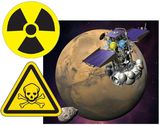
Latest update (Jan. 14):
Russian space officials now estimate that Phobos-Grunt may fall to Earth beetween Jan. 15 and 16, with a center on Jan. 15 at 4:51 p.m. EST (2151 GMT). A map released by Russia's Federal Space Agency shows the potential crash zone in the southern Pacific Ocean, just off the southwestern coast of Chile. Phobos-Grunt will definitely come down somewhere between 51 degrees north and 51 degress south latitude.
Comment: Another game of watch the highly radioactive satellite falling before there is a complete media blackout of where it actually lands.
The Watchers - Phobos-Grunt reentry - A quick guide for skywatchers
The Watchers, 14th January 2012
Spacecraft Could Crash Land On M4 Corridor
Sky News, 14th January 2012
This headline is almost as bad as the US military saying the Phobos Grunt satellite would land in Afghanistan for some strange reason....
Space flight 101 Phobos Grunt Tracking Info
Russian space chief claims space failures may be sabotage
Talking about Phobos-Grunt, Roscosmos leader's comments imply U.S. involved
MSNBC News, 10th January 2012

Some recent Russian satellite failures may have been the result of sabotage by foreign forces, Russia's space chief said Tuesday, in comments apparently aimed at the United States.
Roscosmos chief Vladimir Popovkin stopped short of accusing any specific country of disabling Russian satellites, but in an interview in the daily Izvestia he noted that some Russian craft had suffered "unexplained" malfunctions while flying over another side of the globe beyond the reach of his nation's tracking facilities.
Popovkin spoke when asked about the failure of the $170 million unmanned Phobos-Grunt probe, which was to explore one of Mars' two moons, Phobos, but became stranded while orbiting Earth after its Nov. 9 launch. Engineers in Russia and the European Space Agency have failed to propel the spacecraft toward Mars, and it is expected to fall back to Earth around Jan. 15.
Comment: The opinion given here is that the Russians are trying to save face and I agree... Well, I still think the sabotage is due to space weather as the ultimate "powerful means to influence spacecraft...." I think some point in the future there will be a revelation about cosmic dust or even spacecraft being disabled by electrical discharges. Please note: you heard it here first.
Rocket Debris Re-entry - Munich, Germany 24th December 2011
Spaceweather.com, 25th December 2011
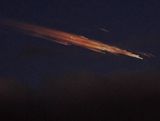 RUSSIAN RE-ENTRY:
RUSSIAN RE-ENTRY: The body of a Russian rocket that propelled a Soyuz spacecraft toward the International Space Station on Dec. 21st fell back to Earth on Christmas Eve. Roman Breisch sends this picture of the re-entry from Erdweg, 20 miles west of Munich, Germany:
"This is what the Christmas star looks like in the 21st century," says Breisch. " The decaying rocket was spectacular look as it wove over the night sky from West to the East, getting brighter and brighter and splitting up into hundreds of shiny pieces."
Comment: There are claims this was seen over Germany and Switzerland, the video link below is certainly impressive, but check out the earlier video dated the 23rd, I am sure they are both of the same event.
Man Escapes Death As Satellite Fragment Crashes Through His Roof
Gizmodo News, 25th December 2011
"It's a weird accident not only because of this Christmas miracle: the Soyuz has an excellent track record. It's a tried-and-true vehicle with hundreds of successful missions since the 1960s, when it was designed by OKB-1 and manufactured at State Aviation Plant No. 1 in Samara, Russia. Its first flight was in 1966. The variant that launched today only has had one failure and one partial failure. [NDTV]
Well, since these rockets have such a good safety record, then something about the environment must have changed and I suspect it is related to space weather and too much cosmic dust being sucked up into the engines and causing damage.
Rocket Debris Re-entry - Munich, Germany 24th December 2011
YouTube, 24th December 2011
Santa Claus’ fireball over Europe was from Russia [VIDEO]
RT News, 27th December 2011
Well, the Russians are happen to accept responsibility for what clearly looked like debris re-entry into our atmosphere and nothing else. Whatever, I am now wondering how bad this will get, the explanation that it was “the re-entry of the third stage of the Soyuz rocket that transported the Dutch astronaut to the ISS” seems strange to me, this does not “normally” happen but quite frankly, we are not living in normal times.
Rocket Debris Re-entry - Munich, Germany 24th December 2011
Spaceweather.com, 25th December 2011
 RUSSIAN RE-ENTRY:
RUSSIAN RE-ENTRY: The body of a Russian rocket that propelled a Soyuz spacecraft toward the International Space Station on Dec. 21st fell back to Earth on Christmas Eve. Roman Breisch sends this picture of the re-entry from Erdweg, 20 miles west of Munich, Germany:
"This is what the Christmas star looks like in the 21st century," says Breisch. " The decaying rocket was spectacular look as it wove over the night sky from West to the East, getting brighter and brighter and splitting up into hundreds of shiny pieces."
Comment: There are claims this was seen over Germany and Switzerland, the video link below is certainly impressive, but check out the earlier video dated the 23rd, I am sure they are both of the same event.
Man Escapes Death As Satellite Fragment Crashes Through His Roof
Gizmodo News, 25th December 2011
"It's a weird accident not only because of this Christmas miracle: the Soyuz has an excellent track record. It's a tried-and-true vehicle with hundreds of successful missions since the 1960s, when it was designed by OKB-1 and manufactured at State Aviation Plant No. 1 in Samara, Russia. Its first flight was in 1966. The variant that launched today only has had one failure and one partial failure. [NDTV]
Well, since these rockets have such a good safety record, then something about the environment must have changed and I suspect it is related to space weather and too much cosmic dust being sucked up into the engines and causing damage.
Rocket Debris Re-entry - Munich, Germany 24th December 2011
YouTube, 24th December 2011
Santa Claus’ fireball over Europe was from Russia [VIDEO]
RT News, 27th December 2011
Well, the Russians are happen to accept responsibility for what clearly looked like debris re-entry into our atmosphere and nothing else. Whatever, I am now wondering how bad this will get, the explanation that it was “the re-entry of the third stage of the Soyuz rocket that transported the Dutch astronaut to the ISS” seems strange to me, this does not “normally” happen but quite frankly, we are not living in normal times.
Satellite crashes into Siberia minutes after launch
ABC News, 24th December 2011
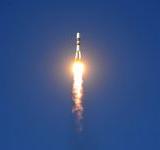
A Russian satellite has crashed into Siberia minutes after its launch, the defence ministry says, in the latest humiliating setback for Russia's embattled space program.
The Meridian communications satellite failed to reach orbit after it was launched due to a failure with its Soyuz rocket, raising new concerns over the Russian space program which has now lost over half a dozen satellites in the last year.
Its fragments crashed into the Novosibirsk region of central Siberia and were found in the Ordynsk district around 100 kilometres south of the regional capital Novosibirsk.
"A sphere was found, around 50 centimetres in diameter, which crashed into the roof of a house in the village of Vagaitsevo," a local security official told the Interfax news agency.
In an extraordinary irony, the official said that the house was located on Cosmonaut Street, named after the heroic spacemen of the Soviet and Russian space program
Comment: Oh dear! So, what's going on? These launches are supposed to be routine but Russia (and other nations) keep having failed launches and the problem seems to be getting worse. Let's think: is there too much cosmic dust about?
Russian Satellite Crashes in Latest Failed Rocket Launch
Space.com, 23rd December 2011
""This area of the space industry is in sort of a crisis," Russian space agency chief Vladimir Popovin told reporters in a televised press conference today. "We can say even now that the problem lies in the engine." But more analysis is needed to be certain exactly what went wrong, he added."
Meteor über Deutschland Weihnachten 2011 - wohl doch die 3. Stufe einer Soyuz Rakete
YouTube, 24th December 2011
I actually think this is satellite debris but it does not seem to want to break up in Earth's atmosphere, but I am really hesistant to call this anything else... Update, see story above.
'Space ball' drops on Namibia
PhysOrg.com, 22nd December 2011

The hollow ball with a circumference of 1.1 metres (43 inches) was found near a village in the north of the country some 750 kilometres (480 miles) from the capital Windhoek, according to police forensics director Paul Ludik.
Locals had heard several small explosions a few days beforehand, he said.
With a diameter of 35 centimetres (14 inches), the ball has a rough surface and appears to consist of "two halves welded together".
It was made of a "metal alloy known to man" and weighed six kilogrammes (13 pounds), said Ludik.
It was found 18 metres from its landing spot, a hole 33 centimetres deep and 3.8 meters wide.
Several such balls have dropped in southern Africa, Australia and Latin America in the past twenty years, authorities found in an Internet search.
The sphere was discovered mid-November, but authorities first did tests before announcing the find.
Comment: Has anyone lost a ball? LOL! See my previous comments on space junk!
Space Junk News: FAA Says Falling Debris Not from Any Known Aircraft (Video)
Gather News, 1st December 2011
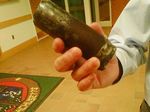
In the most significant UFO news to date, FAA officials are baffled by a piece of metal which crashed through the roof of a furniture warehouse in Plymouth, MA on Thursday because the debris does not belong to any known aircraft.
The 5-lb. chunk of metal was discovered on the floor of Michael's Wholesale Furniture Distributors after workers noticed a giant hole in the roof and the office below in disarray. Police were called in but soon turned the matter over to the FAA when they could not identify the metallic object.
Comment: Hmmm... Maybe a bit of a satellite? Well, as space weather worsens, there will be lots of bits of junk falling from the skies.
Russia's Mars probe starts making regular contact
European Space Agency helps Moscow try to salvage stranded Phobos-Grunt mission
MSNBC News, 24th November 2011

The European Space Agency reported Wednesday that a ground station in Australia has made repeated contacts with Russia's Phobos-Grunt probe, two weeks after a mysterious post-launch glitch.
The reports sparked a growing glimmer of hope for a mission that seemed as good as dead a day earlier.
The $170 million Phobos-Grunt ("Phobos-Soil") mission was designed to land on Phobos, the larger of Mars' two moons, scoop up a soil sample and return it to Earth. The spacecraft is also carrying China's first interplanetary probe, Yinghuo 1, which is supposed to be dropped off in Martian orbit.
Comment: Never give up. Never surrender! Sorry I could not resist that one...
Gov't Report Warns of Chinese Plans to Cripple U.S. Space Defenses
Daily Tech, 17th November 2011
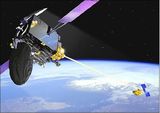
Report says two U.S. satellites were hacked in 2007 and 2008, attacks resemble Chinese military literature
China appears to be taking its cyber-skirmishes with the U.S. to a new level. A recent government report reveals that attackers gained access to two U.S. satellites. Meanwhile, China -- the suspected culprit -- has internally revealed that it's developing capabilities to cripple an enemy satellite network via either outright destruction or planted misinformation.
The potential of a Chinese cyber-attack crippling U.S. defense satellites is an alarming one.
Comment: Call me skeptical I don't care... I don't believe anything in this article, I think this is a work of fiction.... space weather is frying satellites good and proper, that is the real terrorist and there is not much any military or government on this planet can do about it... Maybe this is some kind of justification for more money to be spent on mitigating space weather or more likely an attempt at saving face because the fantastic sums of money that have been spent, many hundreds of billions of dollars [military satellites these days cost 1 billion each, so think how much is at stake], but it is now all at risk.
Toxic Russian Mars Probe Heads Back to Earth
Discovery News, 11th November 2011

It's hard to believe that only last week we were getting excited for Russia's first interplanetary mission in 15 years to launch. By now, we should be happy in the knowledge that the ambitious -- and awesome -- mission is powering through space, toward the Martian moon Phobos.
The reality is that we are now discussing uncontrolled reentry scenarios.
As if that wasn't enough bad news, we are looking at an uncontrolled toxic reentry scenario. Phobos-Grunt -- correctly written "Fobos-Grunt," meaning "Phobos-Soil" or "Phobos-Ground" -- is fully-laden with unsymmetrical dimethylhydrazine and nitrogen tetroxide; that's ten tons of fuel and oxidizer. The probe itself weighs-in at only three tons.
The majority of the fuel will likely vaporize during reentry, but everyone will be hoping for a splash-down in an ocean (which covers two-thirds of Earth, fortunately), as the wreckage will still be hazardous.
There's also a small quantity of radioactive cobalt-57 in one of the science missions housed in the probe -- a fact that will most likely cause a media frenzy.
It is for these reasons that the Russian media is dubbing Phobos-Grunt "
Most toxic falling satellite ever." [...]
So what now? As we await the inevitable reentry of Phobos-Grunt, it would appear the Russian authorities are looking for someone to blame after a string of mission failures. According to a (translated) Interfax bulletin, an anonymous (expert) source indicated this may force reform in the Russian space agency, Roscosmos.
Also, "a number of positions of responsible persons" could face jail time.
Comment: So, that's 10 tonnes of explosives mixed with a nuclear device, but nobody can blame Al-Qaida... Ok, the situation in near Earth space appears to have now gone from bad to worse. The RT video says there is 7 tonnes of highly toxic fuel ready to fall anywhere on Earth.... Well, if you have followed this blog for some time, you will know that there has been murmurings in the space community about satellite launches that were persistently failing. I have only featured a few of these incidents, but this is now getting serious and it will be interesting to see what happens next... Has something changed in the space environment or have the recent Russian incidents all been a coincidence or pure incompetence? The fact the Russians are already whispering about people doing jail time means there will be an investigation and the world will find out the truth. As far as I am concerned, the failure of the world's satellite communication infrastructure has been on the cards for years, but most people will not be bothered until modern technological conveniences are no longer convenient.
Martian curse: Russian probe may crash in populated area (Video)
RT News, 11th November 2011
Russian Engineers Race to Save Troubled Mars Moon Probe
Space.com, 9th November 2011

Russian engineers are scrambling to try to save the Phobos-Grunt spacecraft, which was launched Tuesday (Nov. 8) but has failed to head toward Mars as planned.
The spacecraft appears to be stuck in Earth orbit instead, after its engine failed to ignite to send the probe on a trajectory to the Red Planet. Now Russian Space Agency officials say they have two weeks to figure out how to start up Phobos-Grunt's thrusters before the spacecraft is lost completely.
"They seem to be in a stable and relatively long-lived situation, so they have the most precious spaceflight resource -- TIME -- to figure out and implement an alternate command scheme," space consultant James Oberg, a former NASA space shuttle mission control engineer, told SPACE.com in an email. "It looks like they will try an orbit raise burn about 17:16 GMT [12:16 EST] today."
"The go-for-broke nature of this mission, aiming for the first Russian deep space success in a quarter century, always looked awfully bold, and now looks just plain reckless -- whatever happens next," Oberg said.
Comment: Oh dear! This project will only be reckless if the spacecraft comes crashing back down to Earth and we have another game (the third in about three months) of watching a piece of space junk before it completely disappears in a media blackout.
Ground-Based Laser Cannon to Turn Space Debris into Self-Powered Flaming De-Orbiting
Rockets
Popular Science, 27th October 2011

Another week, another scheme to clean up our bourgeoning space debris problem. This one, like many before it, calls for a powerful ground-based laser to remove orbital debris from low earth orbit. Using high-powered laser pulses fired from the ground, the system would create a small plasma jet emanating from the piece of junk itself, essentially turning each piece of debris into its own laser-powered rocket that would remove itself from orbit.
The system, detailed in a paper released on arXiv last week, would rely on technologies already available or already under development. And unlike other ground-based laser systems proposed in past decades, it would be able to tackle both large and small pieces of space junk. A 33-foot telescope should do the trick, and a powerful enough laser isn’t out of reach, the authors of the paper claim.
Comment: Actually, there are a lot of articles about how to deal with space junk, because the world's satellite communication infrastructure is at risk. The situation is dire, space weather is being compounded by the serious hazard of 12,000+ dead
satellites, thousands of large pieces of blown up or crashed satellites and billions of tiny pieces of junk (flecks of paint etc) swirling
around near Earth space at 17,000 miles an hour (27359 kph)... this is now a very serious problem.
Scientists determining fate of satellite that returned to Earth, probably crashed over Asia
Washington Post, 23rd October 2011

BERLIN — Scientists were trying to establish how and where exactly a defunct German research satellite returned to the Earth on Sunday, after warning that some parts might survive re-entry and crash at up to 280 mph (450 kph).
Most parts of the minivan-sized ROSAT scientific research satellite were expected to burn up, but up to 30 fragments weighing a total of 1.87 tons (1.7 metric tons) could have crashed.
Comment: Hopeless... yet another satellite that 'gets lost'. BUT, maybe there is a news blackout so that authorities can recover the pieces without souvenir hunters getting in the way...
Dead German Satellite Will Fall to Earth This Week
space.com, 17th October 2011

A defunct German satellite is expected to plunge to Earth this week, but exactly when and where the satellite will fall remains a mystery.
The massive German Roentgen Satellite, or ROSAT, is expected to plummet to Earth on Saturday or Sunday (Oct. 22 or 23), though German space officials have also offered a wider re-entry window of between Oct. 21 and Oct. 25. This latest falling satellite comes about a month after a dead NASA climate satellite, called the Upper Atmosphere Research Satellite (UARS), plunged into the Pacific Ocean in late September. [...]
Officials at Germany's space agency studied NASA and the U.S. Air Force's response to the falling UARS satellite in order to prepare for ROSAT's final return to Earth.
"For us, it was an advantage that UARS fell before," Woerner said. "We know now a little better how to interpret all the data and use the global network. It was an advantage that the satellite came down before so that now we can look at how to deal with ROSAT and how we deal with this in the future."
Comment: It's raining satellites.... Personally, I can't see what all the fuss is about. If they know these satellites are coming down, why don't they give the military an opportunity for a bit of target practice? Of course, they need to wait for it to start plumetting to Earth and not be a nuisance to other satellites, but surely, the military would have some expensive missiles that could be used?
The Facts About Germany's Falling Satellite ROSAT (Infographic)
Space.com, 14th October 2011
Warsaw conference to spotlight Space Situational Awareness
Spaceref.com, 28th September 2011

As part of its EU Council presidency, Poland will host a special seminar on Space Situational Awareness on 29 September. The event is co-sponsored by ESA and aims to foster discussions toward defining Europe's future Space Situational Awareness activities. [...]
The objective of the SSA programme is to support Europe's independent use of, and access to, space through the provision of timely and accurate information, data and services regarding the space environment, and particularly regarding hazards to infrastructure in orbit and on the ground.
In general, these hazards stem from possible collisions between objects in orbit, harmful space weather and potential strikes by natural objects that cross Earth's orbit.
The SSA programme will, ultimately, enable Europe to detect, predict and assess autonomously the risk to life and property due to remnant man-made space objects, reentries, in-orbit explosions and release events, in-orbit collisions, disruption of missions and satellite-based service capabilities, potential impacts of Near-Earth Objects, and the effects of space weather phenomena on space- and ground-based infrastructure.
Comment: Well, the situation in space is at break point.... This event is being held on the same date as NASA is also releasing new information about Near Earth asteroids...
link
UARS is down in south-western Canada
Early reports are just in; UARS fragments have been discovered south of Calgary in Canada.
IT Wire, 24th September 2011
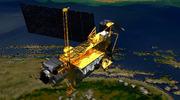
Locals in Okotoks (approximately 30km south of Calgary) are reporting the discovery of wreckage from the recently downed UARS (Upper Atmosphere Research Satellite), including a large piece that left a substantial crater and early estimates suggest a debris field extending to the north east of there.
In addition, apparent video showing pieces of the burning satellite passing over Okotoks is already on YouTube. [...]
Update #15: NASA has confirmed that "NASA’s decommissioned Upper Atmosphere Research Satellite fell back to Earth between 11:23 p.m. EDT Friday, Sept. 23 and 1:09 a.m. EDT Sept. 24. The Joint Space Operations Center at Vandenberg Air Force Base in California said the satellite penetrated the atmosphere over the Pacific Ocean. The precise re-entry time and location are not yet known with certainty."
Comment: The video link below was doing the rounds of Twitter & forums and has already been debunked. Obviously, this is not the UARS re-entry and it looks to be about 30 orbs floating gracefully across the sky! They could even be Chinese lanterns, but I doubt it because if you watch carefully at the beginning, some are travelling at different speeds and others are grouped in smaller geometrical formations. So, how could anyone think these orbs/lanterns are a satellite burning up in the atmosphere? Really, lots of education is required because there is another German satellite coming down soon, see below. It's raining satellites, Hallelujah!?! And as I have confirmed this week, there are approx. 12,000 dead satellites in orbit around Earth! That gives plenty of options for lots of fun and games...
SATTELLITE UARS DEBRIS FALLING OVER CANADA SEP/24/2011
YouTube, 23rd September 2011
What's Up: A Visual Database of Satellites and Debris
YouTube, Nov 8, 2010
More Space Junk: Second ROSAT Satellite to Fall to Earth
Blippit News, 23rd September 2011
Falling satellite slows down, Earth strike delayed
Mail News, 23rd September 2011

September 23, 2011 — CAPE CANAVERAL, Fla. (AP) — A 6-ton NASA satellite on a collision course with Earth clung to space Friday, apparently flipping position in its ever-lower orbit and stalling its death plunge.
The old research spacecraft was targeted to crash through the atmosphere sometime Friday night or early Saturday, putting the U.S. back in the potential crosshairs, although most of the satellite should burn up during re-entry.
"It just doesn't want to come down,"said Jonathan McDowell of the Harvard-Smithsonian Center for Astrophysics. McDowell said the satellite's delayed demise demonstrates how unreliable predictions can be. That said, "the best guess is that it will still splash in the ocean, just because there's more ocean out there."
"In the last 24 hours, something has happened to the spacecraft," said NASA orbital debris scientist Mark Matney. NASA cautioned there was now a slim chance any surviving debris would land in the United States. Earlier this week, the space agency said North America would be in the clear.
Comment: What a joke, the UARS satellite is refusing to crash! The link below provides details on the problem of radiation.
Does the accumulation of "space debris" in Earth's orbit pose a significant threat to humans, in space and on the ground?
Science Clarified, September 2011
Falling Debris and Exposure to Radioactivity
"Risks posed by orbital debris to people on the ground aren't limited to the heavy, twisted chunks of metal that fail to burn on reentry and fall from the sky. What very few people consider are the substances carried inside the various spacecrafts and rockets. Many times, these substances fall back to Earth. On January 24, 1978, after suffering a technical malfunction onboard, the Soviet satellite Cosmos 954 disintegrated over the Northern Territories in Canada. Scattered across a vast area were thousands of radioactive particles, pieces of the satellite's nuclear power core that survived reentry. The Soviets were unable to predict where Cosmos 954 might fall—they estimated somewhere between Hawaii and Africa; nor were they able to alter the satellite's flight path on reentry.
Over 60 nuclear devices were launched into orbit so far. NASA will launch three more missions involving nuclear-powered crafts in the coming years. The army isn't saying much, but nuclear militarization of space is a known trend and an ongoing debate. What happens if a nuclear space rocket is hit by space debris? Nine nuclear spacecrafts have fallen back to Earth, so far. The Cosmos 954 incident was the worst one, and in fairness, some cores were never breached. But of the nuclear-powered spacecraft that fell to Earth, some released measurable radioactivity into the atmosphere. How do we know what effect the release of radioactivity into our atmosphere had on our health? Can we be sure that the next nuclear-powered craft that falls to Earth will once again miss a populated area, and that its core won't be breached?
Neil Armstrong says US space program 'embarrassing'
Space Travel, 22nd September 2011

Neil Armstrong, the first man to walk on the moon, told lawmakers Thursday that the end of the space shuttle era has left the American human spaceflight program in an "embarrassing" state.
"We will have no American access to, and return from, low Earth orbit and the International Space Station for an unpredictable length of time in the future," Armstrong told the House Committee on Science, Space, and Technology.
"For a country that has invested so much for so long to achieve a leadership position in space exploration and exploitation, this condition is viewed by many as lamentably embarrassing and unacceptable."
Comment: Space weather means that space is now an extremely hostile environment and the technology required to go into space has to be vastly different from that currently employed. At a minimum, spacecraft require plasma shields and the availability depends on where scientists have got to in their knowledge of working with plasmas.
FEMA Prepared for Dead NASA Satellite's Plunge to Earth This Week
space.com, 20th September 2011

With a massive dead NASA satellite due to plunge back to Earth this week, the Federal Emergency Management Agency (FEMA) is laying the groundwork for a fast response in case the 6 1/2-ton spacecraft falls over American soil.
The defunct spacecraft, called the Upper Atmosphere Research Satellite (UARS), is projected to make and uncontrolled, fiery fall on Sept. 23, plus or minus a day, according to NASA.
Odds are that nobody will be beaned by any remaining chunks of the nearly $750 million spacecraft, with NASA experts forecasting a remote 1-in-3,200 chance of a possible injury from the satellite's debris
Comment: It's the size of a bus and NASA et al. are obviously very concerned about the risk. The image of the UARS ground track is interesting, yes there is a lot of water but I am surprised it could hit over Europe too. The comments here about not leaving enough propellant for a controlled reentry is probably misguided. When satellite controllers lose control they lose control... There is more info and images at spaceweather.com. Here, we are told the satellite is now tumbling because something hit it, but it's the size of a bus, so what size object would cause it to tumble?
RE-ENTRY ALERT: Spaceweather.com, 20th September 2011
Bus Sized Satellite to hit Earth Friday
CNN, 20th September 2011
This CNN Video is hilarious...
Huge Defunct Satellite Falling to Earth Faster Than Expected, NASA Says
Space.com, 16th September 2011

NASA space junk experts have refined the forecast for the anticipated death plunge of a giant satellite, with the U.S. space agency now predicting the 6 1/2-ton climate probe will plummet to Earth around Sept. 23, a day earlier than previously reported.
The defunct bus-size spacecraft is NASA's Upper Atmospheric Research Satellite (UARS), which launched in 1991 and was shut down in 2005 after completing its mission. The satellite was expected to fall to Earth sometime this year, with experts initially pegging a weeks-long window between late September and early October, then narrowing it to the last week of this month.
Comment: First of all, I had a shock reading a space weather text book for university students, where it stated that only 500 satellites are operational. So the recent YouTube video showing 13,000 satellites is actually showing you the litter of mostly dead satellites. In fact, I have found an online database that says there are 966 satellites operational, but the
French space agency CNES says there are 700 operational, so you can take your pick for what no. is correct... Sigh... We are told here that the recent solar activity has only accelerated the fall of the Upper Atmosphere Research Satellite (UARS) as I suspected, but it does make you wonder what the true rate of satellites falling to Earth is, when there are so many uncontrolled dead satellites littering near Earth space... Anyway, the concern about people picking up bits of satellite debris must be worthy of some consideration. First of all, I just assumed that the debris would be highly radioactive.... but the next thought is that it might also have bacteria on it that is highly radioactive as bacteria in space mutates quickly and becomes extremely agressive. Interestingly, there is more and more awareness that there is bacteria at the very top of Earth's atmosphere on the edge of space and that suggests that bacteria exists in space too... I am sure there will be souvenir hunters, but these are people who don't know what they are dealing with...
UCS Satellite Database
Union of Concerned Scientists, May 2011
"The UCS Satellite Database is a listing of the more than 900 operational satellites currently in orbit around Earth. Our intent in producing the database is to create a research tool for specialists and non-specialists alike by collecting open-source information on operational satellites and presenting it in a format that can be easily manipulated for research and analysis."
This file can be downloaded as a .pdf.
Soyuz Touchdown! Expedition 28 Returns Home
space.com, 16th September 2011
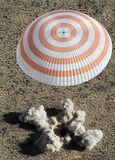
NASA astronaut Ron Garan and cosmonaut's Andrey Borisenko and Alexander Samokutyaev landed their Soyuz TMA-21 spacecraft on September 15th at 11:59pm Kazakstan time. The crew spent 164 days in space.(Roscosmos Footage)
Comment: Brilliant! things are really quite hazardous in space these days due to space weather so
it's great to see that these three have made it home safe, especially after Ron Garan was so miserable and was forced to console himself by singing the ISS blues...
International Space Station trio return safely to Earth after five months
in orbit
Daily Mail, 16th September 2011
Huge Defunct Satellite to Plunge to Earth Soon, NASA Says
space.com, 7th September 2011

Heads up! That's the word from NASA today (Sept. 7) given
the impending re-entry of a 6.5-ton satellite through Earth's atmosphere.
The huge Upper Atmosphere Research Satellite (UARS) is expected to re-enter Earth's atmosphere in an uncontrolled fall in late September or early October. Much of the spacecraft is expected to burn up during re-entry, but some pieces are expected to make it intact to the ground, NASA officials said.
The U.S. space agency will be taking measures to inform the public about the pieces of the spacecraft that are expected to survive re-entry. [...]
That appraisal indicated a surviving mass of 1,170 pounds (532 kilograms) falling within a debris footprint length of some 500 miles (800 kilometers).
"The risk to public safety or property is extremely small, and safety is NASA's top priority," noted a NASA website dedicated to the re-entry. "Since the beginning of the Space Age in the late-1950s, there have been no confirmed reports of an injury resulting from re-entering space objects. Nor is there a record of significant property damage resulting from a satellite re-entry."
Nonetheless, there is a chance that pieces of debris from the satellite will crash in areas accessible to the public.
Comment: More space junk falling out of the sky, I am wondering if it is related to all the recent satellite failures, but it is more likely that the recent serious bursts of solar flares with extreme ultra-violet radiation will have caused some unanticipated satellite drag hence the quick shortening of the lifespan of satellites in space. More stuff about junk below:
Photos: Space
Debris Images & Cleanup Concepts [33]
space.com, 7th September 2011
Space junk at tipping point, says report
BBC News, 2nd September 2011
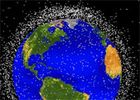
Scientists in the US have warned Nasa that the amount of so-called space junk orbiting Earth is at tipping point.
A report by the National Research Council says the debris could cause fatal leaks in spaceships or destroy valuable satellites.
It calls for international regulations to limit the junk and more research into the possible use of launching large magnetic nets or giant umbrellas. The debris includes clouds of minuscule fragments, old boosters and satellites.
The situation is critical, said Mr Kessler, a retired Nasa scientist, because colliding debris creates even more of the junk.
"We've lost control of the environment," he said.
The report makes no recommendations about how to clean up the field of debris.
Comment: Hmmm... I have been highlighting space junk because Space Weather is delivering more than just 'invisible' sub-atomic particles. The aetheric tide in the form of an interstellar debris cloud, is also delivering large and small rocks, meteoroids and cosmic dust and it poses the great potential for severe damage to the world's satellite communication infrastructure.
"Progress M" fell into the Peruvian jungle?
tiwy.co, 31st August 2011
 The Peruvian military for several days have been actively seeking a "space object" that crashed in the difficult to access outskirts of the Cusco city. The comments of the national mass media noted that the "object" was a large meteorite or "extraterrestrial device" (UFO).
The Peruvian military for several days have been actively seeking a "space object" that crashed in the difficult to access outskirts of the Cusco city. The comments of the national mass media noted that the "object" was a large meteorite or "extraterrestrial device" (UFO).
For this region of Peru, as well as for the entire zone of the Andes Mountains, the emergence of "unidentified flying objects" is a frequent phenomenon, but the present case is remarkable in the fact that it was accompanied by strange sound and light effects. Thousands of people saw the fall of the "UFO". "This has never happened before, - said one of the witnesses, - many of us were panic-stricken." That is why the mountain-wooded neighborhood of Cusco has been examined by military helicopters and commandos units.
But there is another reason for the deployment of intensive search of a suspicious space object. The Peruvian authorities have been warned by a "certain friendly government" that "most likely" the debris of the space truck "Progress M-12M" have dropped on the territory of the country. I
Comment: I was very struck by the "Progress M" satellite trajectory provided here and the fact it says the Russians can't find the crash debris after saying the wreckage was found in Altai Region in southern Siberia. Quite frankly, it would not surprise me if this is actually a second satellite that has fallen out of the skies, because the Peruvian military are involved and we have seen similar events with general news blackouts on several occasions in the last few years.
At the moment, this is a real mystery...
NASA astronaut Ron Garan sings the ISS blues
With Apologies to Guitar Players & Music Lovers Everywhere
YouTube, 30th August 2011

"Learning his return to Earth from the International Space Station might be delayed for possibly up to two months, NASA astronaut Ron Garan sings the blues from the Soyuz spacecraft that will take him home. Eventually. It's all in good fun, so enjoy. (Note: Since Ron and the Expedition 28 crew made this video during some weekend downtime, return options have been under review by NASA)."
Comment: This is a seriously brilliant piece of video if you have never seen the inside of the International Space Station. At about [2:30], a Russian cosmonaut is caught with masking tape in his hands..... it's hilarious because many have had suspicions for a long time about the state of the ISS...
Space station could be abandoned in November
Spaceflightnow.com, 27th August 2011

HOUSTON -- Astronauts may need to temporarily withdraw from the International Space Station before the end of this year if Russia is unable to resume manned flights of its Soyuz rocket after a failed cargo launch last week, according to the NASA official in charge of the outpost.
Despite a delivery of important logistics by the final space shuttle mission in July, safety concerns with landing Soyuz capsules in the middle of winter could force the space station to fly unmanned beginning in November, according to Michael Suffredini, NASA's space station program manager. [...]
The Soyuz-U's third stage is almost identical to equipment used on the Soyuz-FG booster that propels human crews into orbit, according to Roscosmos, the Russian space agency.
Comment: Hmmm... We can presume the Soyuz rocket has not changed in design, but maybe the space environment has changed. So far, I have not come across any serious hints as to what went wrong but there will be some real concern about rocket design plus concern about the rocket debris and nuclear fuels causing some serious contamination.
ISS lifeline vulnerable after Progress burns up
YouTube, 28th August 2011
"The hunt continues for the wreckage of an unmanned Russian spaceship that crashed on Wednesday. The Progress vessel was carrying supplies for the crew at the International Space Station, when it fell back to earth in Siberia shortly after launch. Its crash spread fears its toxic fuel could be dangerous for locals and the environment. Jacob Greaves takes up the story."
Informative
Progress cargo spaceship crashes to Earth in eastern Russia
RT News, 24th August 2011
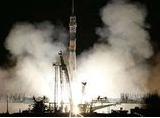
The Russian cargo spaceship Progress M-12M has crashed to Earth in eastern Russia. The spacecraft’s wreckage was found in the Altai Region in southern Siberia, RIA Novosti news agency quotes a source in the regional law enforcement.
Aleksandr Borisov, the head of the district, told RIA Novosti that the explosion was so strong that the windows of buildings 100 kilometers from the place where the spacecraft crashed were nearly smashed. No casualties have been reported.
The spacecraft was launched from the Baikonur Cosmodrome in Kazakhstan on Wednesday. According to a source in the space industry, the accident occurred as the vehicle failed to attain its necessary orbit speed and then split from the rocket-carrier, RIA Novosti reports.
The Russian cargo spaceship Progress M-12M has crashed to Earth in eastern Russia. The spacecraft’s wreckage was found in the Altai Region in southern Siberia, RIA Novosti news agency quotes a source in the regional law enforcement.
No casualties have been reported.
Earlier it was reported that the vehicle had failed to reach its target orbit on Wednesday after it had been launched from the Baikonur Cosmodrome in Kazakhstan.
The Progress vessel was to deliver over 2.6 tonnes of cargo to the International Space Station (ISS), including water, food, oxygen, fuel.
Specialists are now investigating what could have caused the incident, the first to happen with Russian cargo spaceships in the last 30 years. One possible cause of the crash could have been problems with the engine. “According to preliminary data, there was failure in the operation of the engine unit, which led to its emergency outage,” Roscosmos press service says.
Earlier, the “Express” satellite was lost after it had been launched on board a Russian Proton-M carrier rocket from Baikonur on August 18. The satellite was sent into orbit in a bid to broaden telecommunications for Russia and the CIS countries.
Comment: So, I am wondering if anything has been launched successfully into space in the last week or so and if all the failures are related (see details of other space failures in the last week below). The delivery was 2.6 tonnes of cargo to the International Space Station (ISS), including water, food, oxygen, fuel, so will the six astronauts & cosmonauts currently on the ISS be forced to leave? At the moment, the news is that they have enough supplies, but in situations like this, information can change quickly.-->
“Off-Nominal Situation” After Progress 44 Launches
NASA.gov, 24th August 2011
RUSSIAN
CARGO ROCKET LOST: An unmanned Russian
rocket carrying 2.9 tons of supplies for the International
Space Station failed to reach orbit today when its
third stage failed almost six minutes after liftoff.
The Interfax news agency reported the Progress 44
spacecraft re-entered the atmosphere over eastern
Russia. More information: #1,
#2,
#3 spaceweather.com 24th August 2011
China satellite aborts mission after 'malfunction'
PhysOrg.com, 19th August 2011
 An "experimental" satellite launched by China failed to reach its designated orbit after its rocket malfunctioned, according to state media.
An "experimental" satellite launched by China failed to reach its designated orbit after its rocket malfunctioned, according to state media.
Orbiter SJ-11-04, which was propelled by a Long March II-C rocket, was launched on Thursday but was unable to complete its mission "due to a malfunction of the rocket", the official Xinhua news agency said.
The report said the satellite was an "experimental orbiter" but did not disclose further details.
Observers on the web forum NASASpaceFlight.com have speculated that China was due to use the satellite as part of an operational early warning defence system, but AFP was unable to confirm the information from official sources.
Comment: Scientists are already scratching their heads about the number of satellites that are failing to launch into the right orbit and this is another one, see archives. Each time this happens, a satellite worth between 250 million to a billion dollars is lost, so it is a major financial issue. I am wondering whether the Chinese can rescue this satellite or whether this failed launch has generated the latest piece of space junk.
Russia loses contact with just-launched £160m satellite in latest setback for its space industry
Daily Mail, 19th August 2011
"Russia has lost track of a newly-launched, multi-million-pound telecommunications satellite, the latest in a series of setbacks that have dogged its space industry. The £160million Express AM-4 satellite, described by its makers as
the most powerful satellite ever built in Europe, launched in the early hours of yesterday morning aboard a Proton-M rocket from the Russian-leased launchpad in Kazakhstan.
Two satellites lost in a week.... something is definitely up...
Space station faces steady threat from orbiting space junk
PhysOrg.com, 25th July 2011

Now that the space shuttle is retired, NASA and space agencies around the world will focus on the International Space Station for the rest of this decade - and cross their fingers that it lasts that long.
The station, with its crew of six international astronauts, orbits Earth at an altitude of about 220 miles, a neighborhood that is increasingly cluttered by space junk, mainly parts of old rockets and satellites that were either abandoned or destroyed in orbit. Thousands of pieces are big enough - and shooting through space fast enough - to seriously damage or destroy the $100 billion laboratory.
"The orbit they are flying in is the worst possible. . . . The Russians blew up all kinds of things in that damned orbit. So there are thousands of pieces in that particular orbit," said Christopher Kraft, a retired director of NASA's Manned Space Flight Center.
The odds are against the station getting hit by debris big enough to destroy it before its planned abandonment in late 2020. But the threat is no long shot.
NASA's projections indicate the chance of a disastrous collision with space junk are about 1 in 13. [...]
NASA, which evaluates risk in six-month increments, says there is a 1-in-114 chance a serious debris strike will partially disable the space station during the next six months, and 1 chance in 241 of a collision that kills astronauts or totally disables or destroys the station.
During the station's lifetime, that works out to a 1-in-6 chance of a disabling strike - and a 1-in-13 chance of a fatal collision.
Comment: The complaints about space junk are steadily increasing as I have expected, but for NASA to admit a 1 in 6 chance of a "disabling strike" during the station's lifetime, makes me think they have given up and expect the ISS to get hit at some point by the hurricane of space debris swirling about in space, especially as there is also an influx of meteroids and small rocks too being dragged in by the aetheric current.
'Russian' debris threatens Atlantis mission as ground control fears it will hurtle 'dangerously close' to ISS during space walk
Daily Mail, 11th July 2011

* Nasa is trying to work out if the junk comes from a defunct Russian satellite
* It is scheduled to pass the space station at around 5pm GMT on Tuesday
Nasa is monitoring a piece of 'Russian' space junk that looks likely to come dangerously close to the International Space Station during a planned space walk tomorrow.
The debris is heading towards the station, where Atlantis yesterday docked on its final mission.
Scientists are still trying to work out how big the object is and how close it will come to Atlantis. Some believe it originated from a defunct Russian satellite that is orbiting Earth.
LeRoy Cain, mission management team leader, said he hopes the space junk will keep a safe distance and as they observe its trajectory throughout today, they will be able to work out how close it will come. [...]
Two weeks ago, the crew of the ISS had to shelter in the lifeboats after a piece of debris missed them by just over 1,000ft - the closest call to date
Comment: Space exploration should not really have to include watching out for your junk... However, the arrival of Space Weather means a quickly changing cosmic environment (more asteroids, meteors, comets, small space rocks, meteoroids, and dust), where astronauts are now being regularly threatened and more satellites are being lost. As the space environment around Earth deteriorates, the citizens of Earth should realise that our modern communications infrastructure is also under risk, this is the reality of a new era dominated by the aether or space caused by the arrival of a more densely ionised cloudlet in the Local Fluff, see the
Interstellar 'Etheric' Cloud Index.
Debris Forces Astronauts To Evacuate
Sky News, 28th June 2011

A piece of debris has narrowly missed hitting the International Space Station, forcing astronauts to scramble to their rescue vehicles. The unidentified space junk missed the fragile craft by just 250m, a Russian space industry source told the Interfax news agency.
The six astronauts on board the station had to take refuge in their rescue vehicles because it was moving at such speed they had no time to take evasive action. The crewmen had to spend around half an hour in the Soyuz escape capsules before the debris passed safely.
Comment: These days, there are millions of pieces of space debris but the Russians dispute this and say there are billions under a fraction of a centimetre (see below), but there are natural hazards too like micrometeroids (space dust) chipping the solar panels on satellites and shortening their lives, but the intriguing factor is the small asteroids that cannot be detected until the last minute. I am rather cynical that NASA et al. are interested in these small asteroids hitting Earth because they are expected to burn up in the atmosphere on impact, so I imagine the real concern is something hitting the ISS or a billion dollar military/research satellite. This is the reality of worsening Space Weather making a bad situation worse. So, if you are wondering why I talk about what is going on in our local space environment, it is because over the last twenty years or so, there has been a drastic change and consequently, there are massive implications for all life on Earth.
Bend it Like Beckham! Small Asteroid to Whip Past Earth on June 27, 2011
NASA/JPL NEO News, 26th June 2011
Real-time Satellites in Google Earth
YouTube, 08 September 2008
"This collection by Analytic Graphics Inc. shows real-time positions of 13,000 satellites around the Earth in Google Earth."
With 13,000 satellites (mostly dead) in orbit, is it any wonder that scientists panic when they discover an asteroid at the last minute wandering through Earth's geosynchronous orbit.
Why monitor objects in orbit?
European Space Agency, 31st May 2010
Orbital debris mean danger
Space debris are defined as all non-functional, man-made objects, including fragments and elements thereof, in Earth orbit or re-entering into the Earth atmosphere.
Space debris hits satellite animation
Is is estimated that the total number of space debris objects in Earth orbit is on the order of:
- 20 000 - for sizes larger than 10 cm
- 600 000 - for sizes larger than 1 cm
- more than 300 million - for sizes larger than 1 mm
Any of these objects can cause harm to an operational spacecraft, where a collision with a 10-cm object would entail a catastrophic fragmentation, a 1-cm object will most likely disable a spacecraft and penetrate the ISS shields, and a 1-mm object could destroy sub-systems on board a spacecraft. The problem is compounded when you consider that satellites orbiting close to the Earth, such many Earth observation satellites, travel constantly at over 30 000 km/hr.
Scanning the Skies for Debris Hazards
Science Daily, 6th June 2011

Today, orbiting satellites are threatened by over 700 000 pieces of debris. Avoiding them requires knowing where they are, and that means surveillance with radar and telescopes. The European Space Agency is designing a system to catalog debris and warn satellite operators when to take evasive action.
This week, over 150 global experts will meet at an ESA-organised conference to share the latest research findings on space debris, surveillance technology, orbital hazard detection and satellite safety. The first European Space Surveillance Conference (ESS2011) will be held 7-9 June in Madrid, Spain.
The conference spotlights ESA's Space Situational Awareness (SSA) programme, now in the preliminary phase,
which aims to put in place a 'three-legged' system to warn of hazards posed by orbital debris, space weather and natural objects like asteroids that may strike Earth.
Comment: More Space Weather, more space debris... Asteroids are now becoming a major part of Space Weather, as more objects drift along with the new aetheric tide...
Japanese Satellite Declared Dead in Orbit
Space.com, 12th May 2011

Japan's Earth-observing satellite Daichi is dead in orbit, three weeks after a mysterious anomaly crippled the spacecraft, the nation's space agency announced today (May 12).
Daichi, formally known as the Advanced Land Observing Satellite (ALOS), unexpectedly powered down on April 22 for reasons that remain murky. The Japanese Aerospace Exploration Agency (JAXA) repeatedly tried to re-establish communication with Daichi over several weeks, but finally threw in the towel today.
"We decided to complete its operations by sending a command from the ground to halt its onboard transmitter and batteries at 10:50 a.m. on May 12 (Japan Standard Time), as we found it was impossible to recover communication with the satellite," JAXA officials said in a statement. [...]
The death of Daichi (which means "Earth" in Japanese) is not a complete failure, JAXA officials said. The satellite craft launched in January 2006 with a planned mission lifetime of three years, and had already outlasted expectations, they added.
Comment: Due to my research and interest in the recent phenomenon of Space Weather, I am always interested to find out about the demise of satellites and the circumstances surrounding their death. However, this particular instance is just too poignant because we find that the satellite was called Daichi meaning Earth. This provoked me to look up the
definition of Daiichi and it means the 'the first', 'number one' or 'best' but somehow this did not leave me particularly comforted...
Rocket Carrying New NASA Climate Satellite Likely Crashed Into Pacific Ocean
Space.com, 4th March 2011

A rocket carrying NASA's newest climate satellite failed to reach orbit today (March 4) and likely crashed into the southern Pacific Ocean after its nose cone failed to separate on time, space agency officials said.
The rocket, a four-stage Taurus XL booster, launched from a seaside pad at California's Vandenberg Air Force Base at about 2:10 a.m. PST (1010 GMT) carrying NASA's $424 million Glory satellite to study Earth's climate.
"We failed to make orbit," NASA launch director Omar Baez told reporters in a somber briefing following the launch failure. "All indications are, the satellite and rocket are in the southern Pacific Ocean somewhere." [
Video of NASA's Failed Glory Satellite Launch]
Comment: As you will read in the archives, there is an increasing trend of new satellites failing to get into orbit and many are starting to notice the high failure rate. It's always been a precarious business but maybe something else has reduced the odds and that is what is most interesting. Simply, I am not sure we can always believe the official explanations as it's hard to believe the level of incompetence that is being implied. Not much Glory here, but The Daily Mail has lots of nice pictures as usual.
Will German Satellite Crash Into Earth?
De spiegel, 28th February 2011
 Parts of Rosat, a massive, out-of-control German satellite, could smash into the earth sometime between October and December this year. Officials in Germany, however, say that humans likely are not in danger.
Parts of Rosat, a massive, out-of-control German satellite, could smash into the earth sometime between October and December this year. Officials in Germany, however, say that humans likely are not in danger.
The German government is scrambling to determine how to deal with a rogue research satellite that a report states could crash into earth later this year. Up to half of the 2.4 ton, decommissioned Rosat research satellite could fail to burn up completely when it re-enters the planet's atmosphere sometime between October and December. SPIEGEL ONLINE has learned that the federal government has obtained an analysis indicating that the satellite is at risk of crashing down to earth during an 80-day window of time.
Because its final path is impossible to predict, no one knows for sure whether the X-ray research satellite, decommissioned in 1999, might hit a populated area. The satellite includes a considerable amount of ceramic and glass in its design that experts fear will be too heavy to burn up completely upon reentry into the earth's atmosphere.
A best-case scenario would see Rosat, now 370 Kilometers (about 230 miles) in the sky, incinerate in the atmosphere or land in the ocean. A worst-case scenario has about half the satellite reaching the earth, smashing into a major city at a speed of up to 400 kilometers (248.5 miles) per hour, and causing an untold amount of damage.
Danger to Humans Unlikely
Comment: Regulars may start to notice the increasing frequency of these reports of out of control satellites, but they are even admitting that parts of the Rosat satellite could crash into a major city. Well, the conditions are rough out there and we are seeing some bizarre events on the daylight side of the magnetosphere (magnetopause) see
Just look at these amazing pictures of the magnetosphere!, but shooting this baby down is not the answer either... see archives Best of the blog
Space Junk & the escalating problem
Air Force, Lockheed Negotiating Satellite Failure Cost
Bloomberg News, 15th February 2011
 Lockheed Martin Corp. may pay for a failure on its first Advanced Extremely High Frequency satellite that led to the $1.7 billion spacecraft not reaching its orbit, U.S. Air Force officials said today.
Lockheed Martin Corp. may pay for a failure on its first Advanced Extremely High Frequency satellite that led to the $1.7 billion spacecraft not reaching its orbit, U.S. Air Force officials said today.
A blocked fuel line caused the failure and the Air Force is in negotiations with Bethesda, Maryland-based Lockheed on the penalty, Air Force officials, including Erin Conaton, the undersecretary of the service, said.
“We are in the midst of active negotiations,” Conaton told reporters today in the Pentagon. “We are looking at the operational and the financial implications.”
Comment: This has only got a mention because I did not realise that satellites could be so expensive... especially when you realise that even getting a satellite into the correct orbit is a very risky venture, which is exactly what the problem was here, but there does seem to be some relief that the satellite was not destroyed.
Russia locates missing satellite
Herald Sun, 5th February 2011

RUSSIA has re-established contact with a missing military satellite but it was unclear if the craft would still work.
The high-tech Geo-IK-2 craft was designed to help the military draw a three-dimensional map of the earth and locate the precise positions of various targets.
But it lost contact with ground control shortly after its launch Tuesday from a northern Russian space centre, in the second such satellite mishap in less than two months.
A defense ministry spokesman said Wednesday that stable contact had been established with the craft and that officials were now trying to determine if its orbit would allow it to complete its assigned mission.
"We are currently maintaining steady contact" with the craft, Russian space forces commander Oleg Stapenko told Russian news agencies.
Comment: Well, at a cost of approx. 250 million dollars, which is not chicken feed, it's worth making every effort to get this satellite operational and thus not allowing it to become the latest piece of space junk.
WikiLeaks: US and China in military standoff over space missiles
The United States threatened to take military action against China during a secret "star wars" arms race within the past few years, according to leaked documents obtained by The Daily Telegraph.
The Telegraph, 2nd February 2011
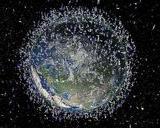
The two nuclear superpowers both shot down their own satellites using
sophisticated missiles in separate show of strength, the files suggest.
The American Government was so incensed by Chinese actions in space that it privately
warned Beijing it would face military action if it did not desist.
The Chinese carried out further tests as recently as last year, however, leading to further protests from Hillary Clinton, the US Secretary of State, secret documents show.
Beijing justified its actions by accusing the Americans of developing an
“offensive” laser weapon system that would have the capability of destroying
missiles before they left enemy territory.
Comment: Well, often when space junk is mentioned the Chinese are blamed for destroying a satellite but the fact that the Americans did the same a year later is largely overlooked. The short sightedness is very apparent but space weather has not helped either. So, the whole satellite communications industry is under threat and many services that people take for granted could simply vanish. Hence the race to start new projects to clean up.
'Fishing net' to collect space debris
A giant net several kilometres in size has been built as part of a collaboration between Japan’s space agency and a 100-year-old fishing net company to collect debris from space.
The Telegraph, 2nd February 2011
"The Japan Aerospace Exploration Agency (JAXA) and Nitto Seimo Co aim to tackle the increasingly hazardous problem of rubbish in orbit around the Earth damaging space shuttles and satellites once and for all."
Space so full of junk that a satellite collision could destroy communications on Earth
Space is so littered with debris that a collision between satellites could set off an “uncontrolled chain reaction” capable of destroying the communications network on Earth, a Pentagon report warned.
The Telegraph, 1st February 2011
"The volume of abandoned rockets, shattered satellites and missile shrapnel in the Earth’s orbit is reaching a “tipping point” and is now threatening the $250 billion (£174bn) space services industry, scientists said."
Missing Russian military satellite
RSOE Emergency and Disaster Information Service, 2nd February 2011

Russia's top military and space official launched a search Tuesday for a missing military satellite that apparently was put into the wrong orbit shortly after its launch.
The Russian defence ministry confirmed that it had lost sight of the craft -- a dual-use vessel that can draw a three-dimensional map of the Earth and locate the precise positions of various targets. The incident came just a month after President Dmitry Medvedev sacked two top space officials for a similar setback and delivered another humiliating blow to Russia's much-maligned space industry.
The seriousness of the situation was underscored late Tuesday by reports that the defence ministry had set up an urgent joint task force with the Russia's space agency to look for the missing craft. The Geo-IK-2 satellite was created in Russia to help the military survey land and create a detailed three-dimensional map of the Earth. It was designed to spin in a circular orbit 1,000 kilometres (600 miles) above ground. But news reports said that the satellite had been put in an an elliptical orbit whose lowest point brought it to within 330 kilometres of Earth.
"We have still not been able to establish contact with the craft, and it looks like most likely, it will be declared lost," a Russian space source said. "The spacecraft will not be able to perform its intended functions at these orbit characteristics," another space official told the news agency.
Comment: Hmmm.... another launch failure, so this is not looking too good for the new Russian equivalent to GPS. What's more, that's about a billion dollars worth of losses (4 satellites lost in the last 8 weeks....).
Stanford researchers try to solve satellite mystery
ABC 7 Local News, 5th January 2011
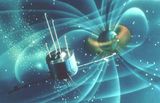
PALO ALTO, Calif. (KGO) -- Sending a spacecraft into orbit is a tenuous business. Surviving the launch is only part of the challenge. Once it is in space, it must survive the rigors of that environment. That can be tough on hardware.
It is one of those under-reported mysteries of the space age -- a rocket delivers a payload into orbit, or on a mission, all appears fine, and then... "Unfortunately, we do not have one way or two way communication with the spacecraft," Stanford university researcher Sigrid Close said.
It happens regularly.
"Satellites are failing, there are anomalies and we are not quite sure what is happening," Close said.
But at Stanford University, Close and PhD candidate Nicolas Lee have been thinking about it.
"Most people focus on mechanical damage," Close said.
One theory is that these satellites are victims of meteoroids, which are smaller than grains of sand, but moving at 60 kilometers per second. When they hit a satellite, they ionize and leave behind an electrical charge.
Comment: Please remember, the satellite communication industry is a multi-billion dollar enterprise, that generally do not want to talk about issues that relate to the viability of this business. This article is a rare glimpse, that reveals that there are new conditions in the space environment of Earth that are rendering basic satellites that cost about 250 million dollars each unuseable. Meteoroids which are smaller than grains of sand could be also linked to claims that Earth is being flooded with more dust from outer space.
'Zombie' Satellite Comes Back to Life
Space.com, 29th December 2010

A "zombie satellite" that spent months sending out signals while it was adrift in orbit has sprung back to life, resetting itself after its unexplained breakdown in space earlier this year.
"The most critical phases of Galaxy 15's recovery have been successfully completed," officials at Intelsat, the communications provider that owns the satellite, said of the newly responsive satellite. [...]
On Dec. 23, the battery on Galaxy 15 — which relied on solar panels pointed at the sun to generate power — became completely drained, Intelsat officials said. Once that happened, the satellite reset itself as designed and began accepting commands from Intelsat's control center.
"We have placed Galaxy 15 in safe mode, and at this time, we are pleased to report it no longer poses any threat of satellite interference to either neighboring satellites or customer services," Intelsat officials announced. [...]
A satellite's resurrection?
With Galaxy 15 now accepting commands from Earth, there is a possibility that the satellite could become fully functional again.
"After we complete the initial diagnostic tests on Galaxy 15 and the drift of the satellite stopped, we expect to relocate the satellite to an Intelsat orbital location where we will assess the viability of the payload, and conduct extensive in-orbit testing to determine the functionality of every aspect of the spacecraft," Intelsat officials said.
Comment: What a recovery! A new space weather legend...
Space Junk Rivals Weapons as a Major Threat
Space.com, 23rd December 2010
 What began as a minor trash problem in space has now developed into a full-blown threat.
What began as a minor trash problem in space has now developed into a full-blown threat. A recent space security report put the problem of debris on equal footing with weapons as a threat to the future use of space.
Hundreds of thousands of pieces of space junk — including broken satellites, discarded rocket stages and lost spacewalker tools — now crowd the corridors of Earth orbit.
These objects could do serious damage to working spacecraft if they were to hit them, and might even pose a risk to people and property on the ground if they fall back to Earth and are large enough to survive re-entering the atmosphere.
The new Space Security 2010 report released by the Space Security Index, an international research consortium, represented space debris as a primary issue. Similar recognition of the orbital trash threat also emerged in the U.S. national space policy unveiled by President Obama in June 2010. [...]
"When the United States tested an anti-satellite (ASAT) weapon in 1985 by destroying its Solwind satellite, and China tested its ASAT in 2007, neither broke any 'rules,'" Johnson-Freese said in an e-mail. "But each created a substantial amount of space debris potentially dangerous to other spacecraft."
Both countries have since changed their policies, and said future tests will be characterized as "missile defense," aimed only at destroying targets that won't leave lingering debris, Johnson-Freese pointed out. "In terms of space debris, it is simply not in U.S. interests to pursue paths that encourage actions that result in debris creation."
Comment: I have continued to highlight the space junk problem because with the onset of severe Space Weather, it was obvious that all that uncontrolled junk floating around Earth would become lethal, like debris swirling around in a tornado. Now it looks like reality has finally set in as the fear mounts of a rapid escalation of space junk damaging more and more satellites, risking the whole satellite communication infrastructure.
“Zombie” satellite shuts down critical NOAA NWS systems overnight
Watts Up With That, 6th December 2010

I’m a bit of a zombie myself as I write this, as I was up until 4:30AM PST dealing with this problem which turned out to affect National Weather Service offices nationwide in addition to my business, which uses the same satellite data feed.
Which brings us to last Friday, while I was out of the office, my staff was dealing with intermittent signal problems with our satellite data feed. The NWS Wallops Island uplink boosted the signal strength on the transponder, and the problem was solved…or so they thought. [...]
Later this morning, the real reason became clear with this message:
NOAAPORT SATELLITE INTERFERENCE
Effective: 12/4/10 – The Noaaport satellite transmission is subject to interferrence from this date forward thru 12/18/10. The below notice is the NWS’ official notice to-date regarding this interferrence.
Complete loss of Novra receiver satellite lock is being experienced due to the interference from the Galaxy15 satellite.
The NWS is now simulcasting the noaaport broadcast on an alternate frequency of 1138.5Mhz. Use your S75 receiver console software to enter in the alternate frequency if your receiver is not staying locked on the original frequency of 1193.5 More info here
Yep, the “rogue” Galaxy 15 satellite was spewing C-band microwaves as it drifts in space, interfering with critical downlinks used by NOAA and the U. S. Air Force. It almost sounds like an idea for a rouge nation to use to interfere with satellite communications.
Comment: This "Zombie" satellite is supposed to be have a satellite sitter 24/7, so somebody must have fallen asleep on the job. However, it is interesting to find out that this out of control satellite is still out there and has actually now caused some real havoc.
Russian satellites crash after failed launch
Reuters, 6th December 2010
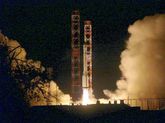
(Reuters) - Three Russian satellites crashed into the Pacific Ocean on Sunday after a failed launch, in a setback to a Kremlin project designed as a rival to the widely used U.S. GPS navigation technology.
Russian news agencies said the satellites veered off course and crashed near Hawaii after blasting off from Russia's Baikonur space centre in Kazakhstan.
The Khrunichev Space Center said the satellites had failed to enter the right orbit after the launch went wrong 10 minutes after take-off.
In a separate statement, space agency Roscosmos said that, "according to the results of our telemetric analysis, it has been determined that the group of satellites went off orbit."
Both agencies said specialists were trying to work out what went wrong. [...]
Gurko also said that the Russian satellite navigation market, estimated at only $1 billion in 2010, would grow to about $10 billion in 2014 and that GLONASS would also market its technology in India, the Middle East and ex-Soviet countries.
Comment: Well, it costs between 250 - 500 million dollars to put a satellite into orbit, so it's just bravado to shrug off this failure as no big deal. I imagine that the failed launch was due to gravitational anomalies and/or geomagnetic factors, but as always, the real details are never really explained.
Update!
Top space officials fired for Glonass launch failure
RT News, 29th December 2010
[...] The botched launch of the Glonass satellites on December 5 resulted in the rocket failing to reach orbit, falling into the Pacific Ocean. According to investigation, the failure was caused by an error in mission instructions, which resulted in too much fuel being loaded.
The incident turned into a major scandal, as it was meant to complete the Glonass satellite constellation and make the navigation system global. Earlier, a number of Russian officials, including the president, had announced that the Russian alternative to GPS would be fully operational in 2010.
An audit of the Glonass program by the Russian budget spending monitor, the Accounts Chamber, is now underway. Some sources hinted that investigators found cases funds mismanagement. For instance, the three lost satellites turned out to have only been partially insured, and some sources said the insurance covered only as little as five per cent of their cost.
Villagers stunned after pieces of Chinese rocket from lunar probe rain down from the sky
Daily Mail, 4th October 2010
 At first these Chinese villagers thought the two large explosions in the middle of the night were an earthquake. But they awoke the next morning to see their village in Suichuan County in Jiangxi dotted with huge pieces of metal.
At first these Chinese villagers thought the two large explosions in the middle of the night were an earthquake. But they awoke the next morning to see their village in Suichuan County in Jiangxi dotted with huge pieces of metal.
These images show the scene in their rural village after the rocket from China's second lunar mission crashed to Earth, narrowly missing crushing their homes. Huge chunks of metal rained out of the sky after the lunar probe Chang'e II jettisoned its Long March 3C rocket on Friday night. No one is believed to have been hurt in the incident. China launched an unmanned lunar probe on Friday, the latest milestone for an ambitious space programme that aims to put a man on the moon later this decade.
Comment: Wow! Look at the size of the pieces and there's not even a dint in the ground! Actually, isn't space debris supposed to burn up, as it makes it's entry back into our atmosphere...
Zombie satellite Galaxy 15 still won't die
After months of drifting in orbit, craft continues to pose potential hazard
MSNBC News, 20th September 2010
 A wayward satellite that has spent months drifting in orbit has not shut itself down as originally predicted, and continues to pose a signal interference risk for other craft.
A wayward satellite that has spent months drifting in orbit has not shut itself down as originally predicted, and continues to pose a signal interference risk for other craft.
The so-called " zombie satellite," Intelsat's Galaxy 15 communications satellite, lost contact with ground controllers in April, but continues to follow a stable path as its operators on Earth work to avoid potential interference with other nearby spacecraft.
In an unprecedented satellite malfunction, the telecommunications broadcast package on Galaxy 15 is stuck on and still transmits signals, but ground controllers are unable to control the solar-powered craft. [...]
Galaxy 15 launched on Oct. 13, 2005 on a European Ariane rocket. The spacecraft's manufacturer, Orbital Sciences Corp. of Virginia, has said that an intense solar storm in early April may have caused the breakdown in communication.
Meanwhile, Intelsat continues its own technical investigation, but has yet to reach any definitive conclusions on the cause of the glitch. "This continues to be an unprecedented event for the entire industry," Mitsis said. "The good news is, we haven't had channel losses, we haven't had programming losses, and we're very thankful for the cooperation we're getting from our satellite neighbors."
Comment: Well, I have been wondering what happened... Obviously, Galaxy 15 was built to last...
ISS docking: success on second attempt
RT News, 4th July 2010
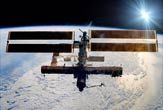 During its second attempt, the “Progress” supply ship has successfully docked at the ISS.
During its second attempt, the “Progress” supply ship has successfully docked at the ISS. The vehicle brought 2,6 tons of cargo to the ISS, including food, fuel, equipment, as well as presents for the crew. The first attempt at docking was aborted because of an electronic malfunction on Friday at 4:50 pm. The failure, however, posed no threat to the crew, since the ISS is well stocked.
There is always a certain reserve of supplies on the ISS, shared Rene Pischel, head of the Moscow office of the European Space Agency.
Comment: Was this another random electronic failure due to Space Weather? Here is the first RT report about this on YouTube.
No Progress: Ship misses Space Station for first time ever
The New Space Junk Blame Game
WUWT, 27th June 2010

Space junk, those bits and pieces dropped by astronauts, or resulting from explosion of upper stages, or collisions of satellites or ASAT tests, are a major safety hazard in Low Earth Orbit and are a growing issue in Geosynchronous Orbit
[...]
However, the point of this post is to discuss a recent New Scientist story that is trying an attempt to revise scientific history, much as the Hockey Team has attempted with the LIA and MWP in the temperature record. New Scientist’s article is trying to claim that the cooler upper atmosphere and continued space junk problem is not due to the solar minimum at all, but due to CO2 induced Global Warming! Yes, that carbon dioxide is not just a car wax, a tooth polish, a paint remover AND an atmospheric warmer, it is also an atmospheric cooler…
Comment: I can't understand this article because they are claiming that NASA and NOAA do not agree with the concept of CO2 causing COOLING in the upper atmosphere, but that is EXACTLY what has been reported before! This is old news... From the article
Earth's Upper Atmosphere Cooling Dramatically, 17th December 2009, at space.com, we read:
"When the sun is relatively inactive — as it has been in recent years — the outermost layer of Earth's atmosphere cools dramatically, new observations find." [...]
"Knowing just how the energy flowing out from the sun naturally impacts the state of the thermosphere also will help scientists test predictions that man's emissions of carbon dioxide should cool this layer. (While that may seem to contradict the idea of global warming, it has long been known that carbon dioxide causes warming in the lowest part of the atmosphere and cooling in the upper layers of the atmosphere.)"
link
There is even a nice video
Why Earth's Upper Atmosphere Is Cooling.
Obviously, NASA sponsors many different scientists with different opinions but up until now they have been clear that more CO2 cools the upper atmosphere. Watts et al. should stay away from scientists in the space community, they are NOT climate scientists and if satellites are wandering out of orbit they want to know exactly why, they have no interest in convincing the general public about the merits of CO2.
Space so full of junk that a satellite collision could destroy communications on Earth
The Telegraph, 26th May 2010
 Space is so littered with debris that a collision between satellites could set off an “uncontrolled chain reaction” capable of destroying the communications network on Earth, a Pentagon report has warned.
Space is so littered with debris that a collision between satellites could set off an “uncontrolled chain reaction” capable of destroying the communications network on Earth, a Pentagon report has warned.
The volume of abandoned rockets, shattered satellites and missile shrapnel in the Earth’s orbit is reaching a “tipping point” and is now threatening the $250 billion (£174bn) space services industry, scientists said.
A single collision between two satellites or large pieces of “space junk” could send thousands of pieces of debris spinning into orbit, each capable of destroying further satellites.
[...]
The space junk, dubbed “an orbiting rubbish dump”, also comprises nuts, bolts, gloves and other debris from space missions.
"This is almost the tipping point," Dr Gopalaswamy said. "No satellite can be reliably shielded against this kind of destructive force."
Comment: I have been saying this for over four years now. In fact, ever since I did the original research and published my book in September 2006. Of course, people want to be positive, so anything that upsets their perception that they can completely control their reality is ignored. However, the reality of the junkyard that is near Earth space has now become an issue and the conditions accerbated by Space Weather just make the situation more unmanageable. Hence, I have been regularly logging stories about space junk and my own thoughts, as a record of my belief that we could quite easily lose the whole satellite infrastructure, just as this report now claims. I have not been pessimistic, it's just a realistic assessment of the facts.
'Zombie' satellite prompts orbital waltz
BBC News, 25th May 2010

Two spacecraft are about to begin an unusual orbital dance above the Pacific Ocean to try to evade the interference from a third, failed satellite. Control was lost of Intelsat's Galaxy-15 platform in April. It will not take commands from the ground and is in a drift towards neighbouring spacecraft. [...]
Space is so littered with debris that a collision between satellites could set off an “uncontrolled chain reaction” capable of destroying the communications network on Earth, a Pentagon report has warned.
The intricacy of the space choreography that is about to take place is thought to be unprecedented in the commercial telecommunications sector.
Comment: The saga continues...
Rogue satellite threatens cable television
Winnipeg Sun, 11th May 2010
 A TV communications satellite is drifting out of control miles above the Earth, threatening to wander into another satellite’s orbit and interfere with cable programming across the United States, the satellites’ owners said Tuesday.
A TV communications satellite is drifting out of control miles above the Earth, threatening to wander into another satellite’s orbit and interfere with cable programming across the United States, the satellites’ owners said Tuesday.
Communications company Intelsat said it lost control of the Galaxy 15 satellite on April 8, possibly because the satellite’s systems were knocked out by a solar storm. Intelsat cannot remotely steer the satellite to remain in its orbit, so Galaxy 15 is creeping toward the adjacent path of another TV communications satellite that serves U.S. cable companies.
Galaxy 15 continues to receive and transmit satellite signals, and they will probably interfere with the second satellite, known as AMC 11, if Galaxy 15 drifts into its orbit as expected around May 23, according to AMC 11’s owner, SES World Skies.
AMC 11 receives digital programming from cable television channels and transmits it to all U.S. cable networks from its orbit 22,000 miles (36,000 kilometers) above the equator, SES World Skies said. It operates on the same frequencies as Galaxy 15.
Comment: Oh dear! A rogue satellite interfering with cable programming might be the only way that some people become aware that there is hell fire going on in the heavens above Earth!
Attempt to Shut Down Zombie Satellite Galaxy 15 Fails
Space.com, 5th May 2010

PARIS –
An attempt to shut down the electronics payload of the out-of-control communications satellite Galaxy 15 has failed, leaving the satellite - which ceased responding to ground commands last month - still in its uncontrolled "zombiesat" drift toward orbits occupied by other spacecraft, the satellite's fleet operator Intelsat said Tuesday.
Galaxy 15 is closing in on the geostationary orbital slot occupied by another C-band satellite, the AMC-11 spacecraft operated by SES World Skies, and with its stuck-on communications payload will be in a position to cause potentially severe interference with the SES satellite during a two-week period starting around May 23, according to Intelsat and SES estimates.
Comment: OK, the electronics on Galaxy 15 is still working and sending out signals that can intefere with other satellites. So now, as well as being worried about it crashing with another satellite, they have to worry about electromagnetic interference (EMI). The space weather nightmare has just been raised to another order of magnitude...
Intense Solar Storm Spins Satellite Out of Control
Fox News, 3rd May 2010

Galaxy 15 stopped responding to ground controllers on April 5. The satellite's manufacturer, Orbital Sciences Corp. of Virginia, has said an intense solar storm in early April may be to blame. An adrift Intelsat satellite that stopped communicating with its ground controllers last month remains out of control and has begun moving eastward along the geostationary arc, raising the threat of interference with other satellites in its path, Intelsat and other industry officials said.
In what industry officials called an unprecedented event, Intelsat's Galaxy 15 communications satellite has remained fully "on," with its C-band telecommunications payload still functioning even as it has left its assigned orbital slot of 133 degrees west longitude 36,000 kilometers over the equator.
Comment: Well, for the many factors that I have outlined in the last three years on this blog which I started after I wrote my book and the fact that Earth was blasted in early April see
Earth struck by most powerful space storm in three years , we have a major report from Fox News (original source Space.com) that a major communication satellite Galaxy 15 has been lost. I actually wrote about the trouble caused in April 1998 when Galaxy IV died, it was the first loss of service in 35 years which was reported as "The Day The Bleepers Died".
We must note that Solar cycle 24 has not even really ramped up yet either, so it does not bode well, especially as they think this satellite is now junk and might become a nuisance. It might explain all the complaints about space junk in the last few weeks. So far, there has been nothing but apathy about Space Weather and it's implications. People are just so comfortable that everythings works at the moment, but that might not last too much longer as more satellites crash out and we lose our modern satellite communication infrastructure. As you might have gathered, I am not too optimistic after researching the impact of Space Weather for the last six years.
More It "...was designed to be operational through 2022"
link & "It will relay GPS navigation to in-flight aircraft, providing highly accurate guidance to pilots at airports and airfields where there currently is no precision landing capability."
link ... Oh dear!
Junkyard Circling the Earth Is Growing, Scientists Say
AOL News, 18th April 2010

Imagine half a million marbles circling Earth -- a sort of celestial obstacle course for the International Space Station, shuttles and satellites. That's the increasingly problematic issue of orbital debris. The objects can be as big as a defunct satellite, but -- traveling at speeds of 17,500 miles an hour or more -- even a paint flake can put a chink in a space shuttle window, as happened on one mission. "It's almost like it's being sandblasted by these very small pieces of space debris," said Roderick Heelis, director of the Hanson Center for Space Sciences at the University of Texas at Dallas. [...]
"Space is like the Wild West used to be,"said David Wright, senior scientist at the Union of Concerned Scientists. The first explorers of the new frontier "didn't feel like they needed laws. They dumped their trash anywhere."
Comment: Nice headline... Well, space weather makes the debris issue far worse as a threat to satellites, as I have previously commented. However, problems with the ISS might mean it soon ends up joining the other junk up there too. Incidentally, there has been a major problem in the last few days, see
NASA considering emergency spacewalk to fix valve and now we find the large crew of 13 Russian and Japanese astronaunts are coming home early,
NASA delays shuttle Discovery's return to Earth .
RE-ENTRY ALERT!
Spaceweather.com, 20th April 2010
Discovery's first landing attempt at KSC has been scrubbed. Mission controllers are focused now on a second attempt for Florida with a deorbit burn at 8:02 a.m. and a landing at 9:08 a.m. EDT. En route to the Kennedy Space Center, the shuttle will fly over many US towns and cities including Helena, Montana; Casper, Wyoming; Tulsa, Oklahoma; Little Rock, Arkansas; and Montgomery, Alabama. If you're near the ground track, listen for sonic booms about a minute and a half after the shuttle passes by. Check NASA's landing blog for updates.
link
Space Junk Mess Getting Messier in Orbit
Yahoo News, 23rd February 2010
 The already untidy mass of orbital debris that litters low Earth orbit nearly got nastier last month.
A head-on collision was averted between a spent upper stage from a Chinese rocket and the European Space Agency's (ESA) huge Envisat Earth remote-sensing spacecraft.
The already untidy mass of orbital debris that litters low Earth orbit nearly got nastier last month.
A head-on collision was averted between a spent upper stage from a Chinese rocket and the European Space Agency's (ESA) huge Envisat Earth remote-sensing spacecraft.
Space junk tracking information supplied by the U.S. military, as well as confirming German radar data, showed that the two space objects would speed by each other at a nail-biting distance of roughly 160 feet (50 meters).
ESA's Envisat tips the scales at 8 tons, with China's discarded rocket body weighing some 3.8 tons. A couple of tweaks of maneuvering propellant were used to nudge the large ESA spacecraft to a more comfortable miss distance.
But what if the two objects had tangled?
Such a space collision would have caused mayhem in the heavens, adding clutter to an orbit altitude where there are big problems already, said Heiner Klinkrad, head of the European Space Agency's Space Debris Office in Darmstadt, Germany.
It turns out, Klinkrad told SPACE.com, that 50 percent of all the close conjunctions that Envisat faces are due to the lethal leftovers from China's January 2007 anti-satellite test, as well as chunks of junk resulting from last year's smashup between an active U.S. Iridium satellite and a defunct Russian Cosmos spacecraft.
Comment: Apparently, it is quite stressful watching out for collisions between live satellites and space junk, but this situation is the inevitable outcome of a space community that has been very short sighted. With Space Weather dragging satellites and junk out of orbits in a chaotic manner, the Chinese being totally inconsiderate in deliberately blowing up a satellite (but no doubt it was meant to warn another government to not mess with them) and the satellite collision in February 2009, means that the world's satellite infrastructure is much more fragile than many realise. The comparison of debris creating more debris and comparing it to evolution is in my opinion a stretch. By the way, we have to consider how bad things are in space when we get these bizarre reports of massive fiery holes in the ground, cover ups and even locals getting sick (radiation poisoning) after going to investigate a crash.
Sweating the Space-Junk Problem
Fox News, 6th November 2009

Life online today exists thanks to satellites, but outer space is getting dangerously crowded, putting those satellites at risk.
More than 20,000 pieces of space junk are orbiting planet Earth, putting our communications satellites in serious danger. At last, The Pentagon is taking it seriously, with the military finally tracking hundreds of satellites to watch for collisions. Is it too little, too late, or is the Pentagon onto something?
"We were in denial before February 10th," notes Michio Kaku, professor of theoretical physics and the author of "Physics of the Impossible." On that date, a collision in space between a dead Russian satellite and a US Iridium communications satellite knocked out the satellite and sent a shower of debris into the surrounding space.
"We basically forgot the location of the satellite!" Kaku lamented. Now the Pentagon says that 800 satellites will be monitored every day, and up to 1,300 satellites by the end of the year. But space junk is still a problem.
"There's 20,00 pieces of space junk! Everything from paint flecks to screwdrivers to tool bags to booster rocket parts" is orbiting the planet, notes Kaku, pointing out that
if more satellites are damaged, communications could be set back 80 years or more.
"Television, the Internet, Wall Street. The Pentagon could not fight wars, you couldn't get online, Wall Street could not make transactions without satellites."
Some space objects are maneuverable, meaning the Pentagon can reposition them if it senses a collision. A cosmic "vacuum cleaner" could clear up the rest of the gunk, though that would be costly and impractical. Laser beams are another option, though we don't have a laser capable of such activity. And neither solution is imminent.
Meanwhile, the odds of another collision are high.
Comment: This article is incredible because first it admits that scientists were in denial (how Oprah-esque) and secondly the Pentagon admits that they weren't watching their junk. This article even gives a hint of soul searching as scientists wring their hands. Now, for you folks that don't think we could lose our satellite infrastructure, just watch the magnetosphere (Earth's magnetic shield)
blowing about in a galactic gale and imagine that one day you wake up and all the satellites have been blown out of Earth orbit....
ROCKET FUEL DUMP:
Spaceweather.com, 19th October 2009
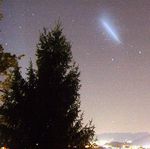 A Centaur rocket caused a minor sensation on Sunday night, Oct. 18th, when it flew over Europe and dumped a load of excess propellant.
A Centaur rocket caused a minor sensation on Sunday night, Oct. 18th, when it flew over Europe and dumped a load of excess propellant. "We saw it at 9:15 pm local time (1915 UT)," report Federico and Chiara Bellini of Bodio Lomnago, Italy.
"It looked like a comet with a fan-shaped tail."
They took this 30-second exposure using a Nikon D70s:
"About 20 seconds later, a second object appeared." That was a US military weather satellite (DMSP F-18), which the Centaur booster had helped launch earlier in the evening from Vandenberg, Air Force Base in California. "And then," the Bellinis continue, "a big circular halo followed the two across the sky." The halo, shown here in a movie recorded by Jonas Förste of Jakobstad, Finland, was probably an expanding puff of gas emitted during an earlier firing of the Centaur.
Comment: I just don't believe it, this is a magical tale.... If I can find an expert who can verify that this report is hogwash, I will add a link.
Rogue satellites to be cleared from Earth's orbit by German robots
German-built robots are to be sent into Earth's orbit to repair 'dead satellites' or push them into outer space
The Observer, 11th October 2009
 "Robots that rescue failing satellites and push "dead" ones into outer space should be ready in four years, it has emerged.
"Robots that rescue failing satellites and push "dead" ones into outer space should be ready in four years, it has emerged. Experts described the development by German scientists as a crucial step in preventing a disaster in the Earth's crowded orbit.
Last year it was reported that critical levels of debris circling the Earth were threatening astronauts' lives and the future of the multibillion-pound satellite communications industry. But senior figures at the German Aerospace Centre (DLR) told the Observer they have been given the go-ahead to tackle a crisis that will come to a head in the next five to 10 years as more orbiting objects run out of fuel."
Comment: So whilst NASA scientists fret, the Germans are taking matters into their own hands and getting on with a solution, but will it be good enough to counteract Space Weather?
Orbital Debris Cleanup Takes Center Stage
Space.com, 7th October 2009

"There are serious challenges ahead in mitigating space clutter now orbiting the Earth, problems that are exacerbated by the rise of small satellite launchings as well as using debris removal techniques that mimic anti-satellite systems.
Experts focused on the escalating menace of orbiting litter during "Green Space: Addressing Space Debris - End of Life Operations," a recent session at the Space 2009 Conference and Exposition in Pasadena, Calif., staged by the American Institute of Aeronautics and Astronautics.
Recent maneuvers by both the space shuttle and the International Space Station to avoid speeding space junk have helped flag the issue. So too has the February 11 collision between Russia's defunct Cosmos 2251 satellite and a U.S. commercial Iridium spacecraft — purportedly the first time two intact spacecraft have accidentally rammed into each other."
Comment: Well, space junk is a major problem that is not going to be easy to sort out as outlined in this article. Yet, Space Weather is a major factor, as the new tough electrical conditions in space, shortens the lifespan of satellites and so perpetuates the problem by creating more junk.
Spacewalking astronauts briefly lose ground link
News Daily, 1st September 2009

CAPE CANAVERAL, Florida, Sep. 1, 2009 (Reuters) — Spacewalking astronauts outside the International Space Station lost touch with ground controllers for 33 minutes on Tuesday when a storm knocked out their radio link.
Spacewalkers Danny Olivas and Nicole Stott kept working outside the International Space Station during the communications blackout under the watchful eyes of their crewmates. "This is no safety of flight issue," said NASA commentator Rob Navias from Mission Control in Houston, which gets its satellite feeds from the shuttle and space station via a ground antenna in White Sands, New Mexico.
Comment: This press release is so vague we have to assume that the 'storm' was probably a substorm induced by space weather which occurs every 3 hours or so and probably unavoidable for such a long spacewalk, but it indicates the tough electrical conditions of lower Earth orbit.
Race is on for space-junk alarm system
New Scientist, 26th July 2009

"A WORLDWIDE network of radar stations could tackle the ever-growing problem of space debris - the remains of old rockets and satellites that pose an increasing threat to spacecraft.
The US government is launching a competition, which will run until the end of 2010, to find the best way of tracking pieces of junk down to the size of a pool ball.
Three aerospace companies - Northrop Grumman, Lockheed-Martin and Raytheon - have each been awarded $30 million by US Air Force Space Command to design a "space fence" that will constantly report the motion of all objects 5 centimetres wide and larger in medium and low-Earth orbits. "It's basically going to be an electronic tripwire," says Rich Davis, Northrop's special projects director in Linthicum, Maryland. "It will give you the orbit angle and time of day that every satellite or piece of debris passes any point you choose." Once you know that, he says, it is easy to calculate potential collision risks."
Comment: The headline is toned down since the last time there was mention of a race, which Fox reported as
Scientists Race to Prevent 'Catastrophic Disaster' in Space, see archives. The competition implies that instead of the usual suppression of new ideas through imposed chains of command, the desperation is allowing any smart person to have their idea utiltised, but in the end, they might not get any personal benefit as can be noted by scientists who complain about how these schemes work.
Lockheed Martin to work on ‘Space Fence’
Business Weekly, 12th June 2009

"Lockheed Martin Corp., Northrop Grumman Corp. and Raytheon Co. have each been awarded a $30 million contract to develop a prototype of a radar network to keep track of all the debris orbiting the earth, the Defense Department said Thursday. The contracts were awarded by the Air Force, which has named the system, “Space Fence.” The Air Force likely will select one of the three companies to build the system based on their work on the contract."
Comment: It looks like the space debris problem is so bad, that the military are now suffering from low visibility! See
Pentagon's Space Spies for details. Where we find: "You can't protect what you can't see. And, right now, America's military has a really, really hard time seeing into space. Which means U.S. satellites could be at risk.
So it makes sense that the Air Force is spending a whole lot of money on "space situational awareness" -- getting a better picture of what's in orbit -- before the service starts investing big in the more outlandish tools of space war. Air Force magazine breaks down the programs:
The Space Fence is an array of dispersed radars that track satellites as they pass over the United States. The Air Force is planning a $275 million upgrade over the next five years that will convert the system to S-band radar, allowing greater search capability and faster revisit times. It also will sharpen the resolution of the radar, so that it can see objects from a current minimum of 12 inches in size down to two inches in size. The radars themselves will be distributed over a wider geographical area, giving a better view of the horizon. They will be able to see beyond low earth orbit (LEO) to medium Earth orbit (MEO). [Col. Ronald] Grundman said the old hardware likely will be retired around 2011, because “it’s reaching some sustainability limits.”
Space Probe Set to "Collide" With Earth to Simulate Approaching Asteroid
National Geographic, 11th June 2009
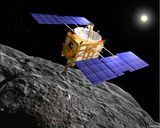
"A 1,124-pound (510-kilogram) space probe will "collide" with our home planet in June 2010 to simulate an approaching asteroid, Japanese scientists have announced.
The Hayabusa spacecraft is currently on its way back to Earth after a successful mission that landed on and hopefully collected samples from the asteroid Itokawa.
Potential samples will be aboard a heat-resistant capsule that will separate from Hayabusa shortly before re-entry into Earth's atmosphere so they can be recovered. But experts say the main body of the craft will most likely disintegrate during the trip through Earth's atmosphere. Although the plan was not part of Hayabusa's original mission, scientists at the Japan Aerospace Exploration Agency (JAXA) recently decided to make the most of the doomed probe's return.
Comment: Don't we already have a MASSIVE problem with space debris? We are being told that even flecks of paint swirling around at a high speed 7-10 kilometres per second can damage satellites. Well, we will just have to hope that they get their samples safely, because after the engineering feat of actually collecting samples, getting them back to Earth safely is not guaranteed.
Shuttle Dodges Space Junk Risk
Wired Science, 17th April 2009
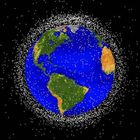
"Despite the recent rash of space-debris problems, the risk that the space shuttle mission to service the Hubble Space Telescope will have a catastrophic collision with space junk and micrometeoroids won't exceed NASA guidelines.
NASA said Thursday the new orbital debris risk for STS-125 had fallen to 1 in 221. A couple of precautionary maneuvers -- in particular coming into a lower, less crowded orbit on the 10th day of the mission and using Hubble as a shield -- reduced the spaceship's chance of getting hit with a stray paint chip or metal bolt. [...]
It could, however, just be a matter of time before NASA can't outmaneuver the space-debris risk, particularly in the most satellite-crowded orbit, which is several hundred miles above Hubble.
"That region of space is already supercritical. Given the amount of debris that was up there, the debris would double in 50 years, even if you didn't launch anything up there." said David Wright, a space security specialist at the Union of Concerned Scientists.
"What that says is that debris mitigation isn't enough.
We're at the point where we have to do debris remediation and we don't know how to do that." But at lower orbits, where Hubble and the space station are,
we will be able to continue the cat-and-mouse game with tiny pieces of debris, at least for a while. "You certainly can't say that anytime soon, the debris consequences are going to be so high that it's going to keep us out of space," Wright said.
Comment:This sounds a lot like bravado in the face of very difficult circumstances. See previous comments.
Scientists Race to Prevent 'Catastrophic Disaster' in Space
Fox News, 7th April 2009

"Kaplan, now a senior researcher in the space department at the Johns Hopkins University Applied Physics Laboratory in Laurel, Md., has been figuring out how to bring down objects from space. That makes him
one of a few dozen scientists feverishly trying to prevent what he calls a "coming catastrophic disaster" — a collision between a manned spacecraft and orbital debris, or space junk, thousands of pieces of which are zooming at thousands of miles per hour 300 to 800 miles above the Earth, ready to take out anything in their paths. [...]
Experts are saying we could expect a crash every couple of years, but this is an educated guess," says Michael Krepon, co-founder of The Henry L. Stimson Center, a Washington-based think tank that focuses on security concerns.
"We really don't know the scale of the problem — we just know that we've already done serious damage to a zone of space that's essential to our security." Our fast-paced, hyperlinked world could not exist without orbital relays; everything from phone calls to GPS devices to banking transfers needs satellites to work.
Even more damaging to satellites, and the enormous potential of the commercial development of space overall, could be a ground-based threat — crippling lawsuits over orbital-debris collisions.
"Liability claims killed the private aviation industry," says Peter Diamandis, founder and chairman of the X Prize Foundation, which sponsors contests and awards for private space ventures and innovation.
"In space, we're going to be dealing with 'Your satellite killed my satellite' claims. It's going to be a mess."
No ... it's a mess already."
Comment:Well, now that scientists are talking in terms of a "'Catastrophic Disaster' in Space", I feel that my stance on Space Weather has been proven correct. My vindication is especially pertinent after my dealings with a so-called 2012 'expert' who could not see how the prediction 'A New Age dominated by Space' by GENUINE Mayan Elder, Carlos Barrios was related to Space Weather. In fact I have an email that states, "Space Weather does not sound like a Mayan Prophecy". I suppose NASA were suppose to call the build up of evolutionary energies around the Earth, 'Quetzalcoatl' Weather.
Shuttle and space station dodge debris
LA Times, 23rd March 2009
 "This is the third time in the last few weeks that the station has had to worry about space junk speeding around Earth on a possible collision course.
"This is the third time in the last few weeks that the station has had to worry about space junk speeding around Earth on a possible collision course. Ten days ago, before Discovery launched, the crew of the station had to take shelter in a Russian Soyuz lifeboat capsule as a 5-inch piece of spent rocket motor came within striking
distance; it missed. And in February, two satellites collided, creating a field of debris.
"Space debris is becoming an ever-increasing challenge," flight director Kwatsi Alibaruho said Sunday evening. When it comes to dodging junk, "it's a big deal. It's very tiring. Sometimes it's exhausting.""
Comment: I wonder if the 4 inch "spent" piece of junk from a Chinese satellite was caused when the Chinese irresponsibly blew up an old satellite with a missile in space (February 2007) and created "a huge debris field" according to Russian sources. At the time the rest of the space community were incensed. It does sound from the flight director's account that this may have been an ongoing battle and we are only hearing about it because of the publicity with the two satellites colliding, but space junk was already a problem before the Chinese compounded the problem.
Space junk endangers $1B Canadian satellites
Canada.com, 21st March 2009
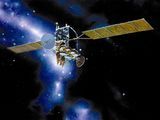
"OTTAWA — Two Canadian satellites are in danger of being damaged or destroyed because they’re passing through massive clouds of space junk caused by a recent collision between a Russian and an American satellite. The two Canadian satellites, RADARSAT-1 and RADARSAT-2, orbit the Earth 14 times each day, heading east to west. Meanwhile the clusters of space junk travel north to south. Scientists say they could be on a collision course.
"There is a very high risk for the two satellites," said Robert Saint-Jean, manager of satellites at the Canadian Space Agency."
Comment: Well, it's over 5 years since I started researching Space Weather and realised that our satellite communication infrastructure was under threat, especially as there is so many disabled satellites that cannot be controlled. Yet, due to human folly with China and the United States shooting down unwanted satellites, thus creating huge debris fields, it seems that this situation has become untenable. Here the Canadians are just telling the world exactly how bad things are.
Discovery nears space station as debris nears, too
Associated Press, 16th March 2009
 "Seven astronauts raced to the international space station aboard space shuttle Discovery on Monday, while NASA debated whether the orbiting outpost will need to move aside to dodge part of an old Soviet satellite.
"Seven astronauts raced to the international space station aboard space shuttle Discovery on Monday, while NASA debated whether the orbiting outpost will need to move aside to dodge part of an old Soviet satellite.
Space station astronauts had a close call last week with a small piece of orbiting junk, and NASA said Monday that debris from a satellite that broke apart in 1981 could come within about half a mile of the station early Tuesday. [...]
Kosmos 1275 broke up somewhat mysteriously, said NASA orbital debris scientist Mark Matney. It may have crashed with another object that wasn't tracked and it made a cloud of 310 pieces of debris that are slowly falling into a lower orbit, he said. "
Comment: NASA has to take action concerning space junk, twice in a period of a week? Estimates vary from 400 million to billions of tiny pieces of junk, so we can only surmise that the situation has becoming untenable. This article is confusing, as the recent crash was Kosmos 2251, but here we have junk from
another Russian satellite Kosmos 1275 that 'broke up' 'mysteriously'. It's seems that if you like mystery, then working within the space community is a great place to be. See also
Orbital Water Guns Could Blow Away Space Junk. Quote: "We need to treat space like a national park — carry out what you carry in," says Heiner Klinkrad, who runs the European Space Agency's Space Debris Office in Darmstadt, Germany, and is chairman of the global Inter-Agency Space Debris Coordination Committee." This sounds like NASA are coming round to the idea of 'space' environmentalism!
Debris Briefly Forces Astronauts From Space Station
ABC News, 12th March 2009
 "A tiny piece of space junk smaller than a fingertip forced three astronauts to briefly evacuate the International Space Station on Thursday when the debris came too close for comfort.
"A tiny piece of space junk smaller than a fingertip forced three astronauts to briefly evacuate the International Space Station on Thursday when the debris came too close for comfort. The astronauts, Russian Yury Lonchakov and Americans Michael Fincke and Sandra Magnus, spent about nine minutes in the Soyuz escape ship before the space litter passed by. NASA called the threat to the $100 billion space station "minimal" and said the astronauts were moved into the Soyuz
Comment: Wow, that's some serious visual capability! Now, why didn't someone spot two large satellites about to crash into each other? See article date 6th March,
NASA: Shuttle's Risk of Debris Strike Up 6 Percent, note:
"NASA is still assessing the risk to the upcoming Hubble repair space shuttle mission, targeted to fly in late May. The danger to this trip could be greater, managers said, because that shuttle is set to take its crew to an altitude of about 372 miles (600 km), putting it much closer to the range of the collision than the space station is. "That didn't look so good, when they looked at that," Bill Gerstenmaier, NASA's space operations chief, has said."
What a mess! Experts ponder space junk problem
AP News, 19th February 2009

"Think of it as a galactic garbage dump. With a recent satellite collision still fresh on minds, participants at a meeting in the Austrian capital this week are discussing ways to deal with space debris — junk that is clogging up the orbit around the Earth. [...]
Johnson is the co-lead of an International Academy of Astronautics study that is exploring ways of extracting space debris from Earth orbit. Some of the suggestions sound pretty spaced out.
One proposes attaching balloons to pieces of debris to increase their atmospheric drag and bring them back to Earth faster. Another, said Johnson, foresees attaching a 10-mile (16-kilometer) electrodynamic tether to debris that would generate a current, which then could be controlled from the ground enabling technicians to bring it down.
Many scientists are skeptical about the possibility of a cleanup."
Comment:The suggestion of an electrodynamic tether is quite amusing after the previous failed attempt by the NASA/Italian tethered satellite experiment (TSS-1R) on the STS-75 mission. In 1996, the computer on-board the Italian satellite was fried and the fuel on-board mysteriously depleted, when the "shoestring-sized tether" — almost fully deployed — 12 miles above the Columbia space shuttle simply broke. This fast became a massive PR disaster for NASA's $450 million project and only boistered Electric Universe theorists. To my knowledge, there is still an satellite whizzing around our planet, trailing a 12-mile tether pointing towards the earth.....
COLLIDING SATELLITES:
Spaceweather.com, 13th February 2009

Copy:
COLLIDING SATELLITES:
For the first time ever, two large satellites
have collided in Earth orbit. It happened on Tuesday, Feb. 10th,
when
Kosmos 2251
crashed into
Iridium
33 approximately 800 km over northern Siberia. Both satellites
were completely destroyed.
Click
to view a 2.3 MB animation
U.S. Strategic Command is tracking hundreds of satellite fragments.
In the 48+ hours since the collision, the debris swarm has spread
around both orbits. Experts characterize the distribution as a pair
of "clumpy rings"; one ring traces the orbit of Iridium
33, the other traces the orbit of Kosmos 2251.
This injection of debris substantially increases the population
of space junk at altitudes near 800 km. Collisions are now more
likely than ever. Fortunately, the International Space Station orbits
Earth at a much lower altitude, 350 km, so it is in no immediate
danger. The Hubble Space Telescope is not so safe at 610 km. In
the days ahead, researchers will carefully study the make-up and
dynamics of the debris cloud to estimate when bits will begin to
drift down to lower altitudes.
Comment: The general awareness of a New Age dominated by space has arrived with a bang!
2 Big Satellites Collide 500 Miles Over Siberia
CBS News, 11th February 2009
 "In an unprecedented space collision, a commercial Iridium communications satellite
and a defunct Russian satellite ran into each other Tuesday above northern Siberia, creating
a cloud of wreckage, officials said today.
"In an unprecedented space collision, a commercial Iridium communications satellite
and a defunct Russian satellite ran into each other Tuesday above northern Siberia, creating
a cloud of wreckage, officials said today. The international space station does not
appear to be threatened by the debris, they said, but it's not yet clear whether it poses a risk
to any other military or civilian satellites. [...]
Johnson said the collision was unprecedented. "Nothing to this extent
(has happened before)," he said. "We've had three other accidental collisions between what
we call catalog objects, but they were all much smaller than this and always a moderate
sized objects and a very small object. And these are two relatively big objects. So this is a
first,
unfortunately." [...]
Asked if other satellites might be at risk, Johnson said "technically, yes. What we're
doing now is trying to quantify that risk. That's a work in progress. It's only been 24 hours.
We put first things first, which is station and preparing for the next shuttle mission."
Comment: Amazing, what did I write last week, see below! Well, I have believed for
quite some time that our satellite communication infrastructure is under risk from Space
Weather and the turbulent conditions that now exist . Since the start of this blog, I have
consistently reported about the problem of the amount of junk in space but I was unaware
until recently that there is an estimated 300,000 pieces of junk between 1cm -10cm and
billions of pieces of junk under 1cm. This article mentions 18,000 artificial objects in space
bigger than 10 centimeters, but only about 800 of which are operational satellites being
tracked. According to The Secure World Foundation's
Space Situational
Awareness "...All of this material orbits the Earth at high velocities, usually
between seven and ten kilometers per second, and in an uncontrolled manner." Hmmmm.....
Backyard space watcher
films lost tool bag
The Age, 25th November 2008

"A tool bag lost in space by an American astronaut in an unprecedented blunder last week
has been spotted and filmed by a backyard satellite watcher in Canada. Astronaut
Heidemarie Stefanyshyn-Piper watched helplessly as the bag drifted away from her while
she was cleaning and greasing a a gummed-up joint on a wing of solar panels on the
International Space Station."
Comment: There has been a lot of media coverage about an astronaut losing a tool bag
when doing repairs on ISS, but this story of an amateur astronomer finding the tool bag
amongst all the junk in space is truely amazing and really makes you think..... If a so-called
amateur can find something as small as a tool bag, what about other objects that are far
bigger that can be seen as they part of the electromagnetic spectrum with sophisticated
infra-red, ultra-violet and radar equipment.....
ATV carries out first debris avoidance manoeuvre for the ISS
ESA News, 28th August 2008

"The Automated Transfer Vehicle, Europe’s ISS logistics spacecraft, was used to perform its first debris avoidance manoeuvre for the International Space Station. The manoeuvre was started yesterday at 18:11 CEST (16:11 UT) and finished 5 minutes 2 seconds later. In the current Station configuration the Automated Transfer Vehicle(ATV), which is docked to the aft end of the Russian Zvezda Service module at the back of the Station, is the only vehicle that can carry out this kind of manoeuvre. The way to avoid space debris, which in this case comes from an old satellite, is by performing a so-called retrograde manoeuvre of the Space Station, i.e. by slowing it down, which in turn lowers its orbiting altitude. "
Comment: So, the ISS has measures to avoid being hit by the junk that surrounds this planet, is that really such an impressive feat? I would be more impressed if they could find a way of clearing up the junk. So, now that NASA are reassuring us that we are still on for celestial fireworks in solarcycle 24, it might be interesting to watch the ISS dodge one bullet after another as satellites die and spin out of control after getting hit by space weather.
Cosmic Clean-Up: Wild Ideas to Sweep Space
Space.com, 19th March 2008

"Space is littered with millions of bits of orbiting garbage leftover from missions. The flying
flotsam can delay launches and could potentially smash into spacecraft. Now some creative
ideas are emerging for how to sweep up the junk. One idea even involves an oversized
NERF ball."
Comment: When you consider that some of these satellites cost in the region of $500
million dollars, it seems bizarre that China and the United States see fit to create more lethal
junk by shooting down disabled satellites....
China missile test littered space with loads of
debris
The Seattle Times, 30th March 2007
 Comment:
Comment: There has been so many stories about this particular incident where the chinese blew up an
old satellite in space and created an even bigger space junk problem. Most people won't
realise the depth of irresponsibility that was demonstrated here. I imagine that this event
generated near apoplectic states amongst senior directors in the multi-billion dollar a year
satellite communication business. There is already a huge problem with spaceweather, so
creating more hazard to knock-out very expensive hardware in space is just plain stupid. If
large numbers of satellites get knocked-out due to chaotic conditions induced by
geomagnetic storms then our modern technological world will be in for at least some
inconvenience, possibly severe disruption or at the very worst total meltdown.
Space blast's huge debris field
KAZINFORM, February 27th 2007
 Comment:
Comment: Another huge explosion in space creating more debris in space. There is already a problem
finding places to park satellites and with spaceweather, more and more sateliites are being
rendered useless. I actually wonder whether there is a critical level when Gaia decides there
are too many irritants. A bizarre situation.
Orbital Debris a Growing Problem with No End in Sight
Space News, July 31, 2006

"The proliferation of garbage in low Earth orbit has reached a point where it will increase in the coming decades even if all rocket launches were canceled starting now, according to research by NASA’s Johnson Space Center. The satellites and rocket stages designed and launched before the seriousness of the problem was recognized are like time bombs, waiting to break apart in the coming years on combustion of their remaining fuel thereby multiplying the pieces of space garbage. At some point, the growing population of orbiting debris increases the likelihood that pieces will collide into each other, spawning still more space junk. The problem is especially acute at altitudes of between 900 and 1,000 kilometers.
Research by NASA’s Nicholas L. Johnson and J.C. Liou conclude that even if all launches were stopped immediately, the debris population would remain constant for about 50 years, then increasing noticeably after that as a result of in-orbit collisions."
Comment: Sigh!
<
Will Space Junk Bring Down The Space Initiative
Space.daily.com, Mar 16, 2004

Comment:Great article here on space junk and the risks for astronauts. The article is surprisingly hostile towards NASA.....
















